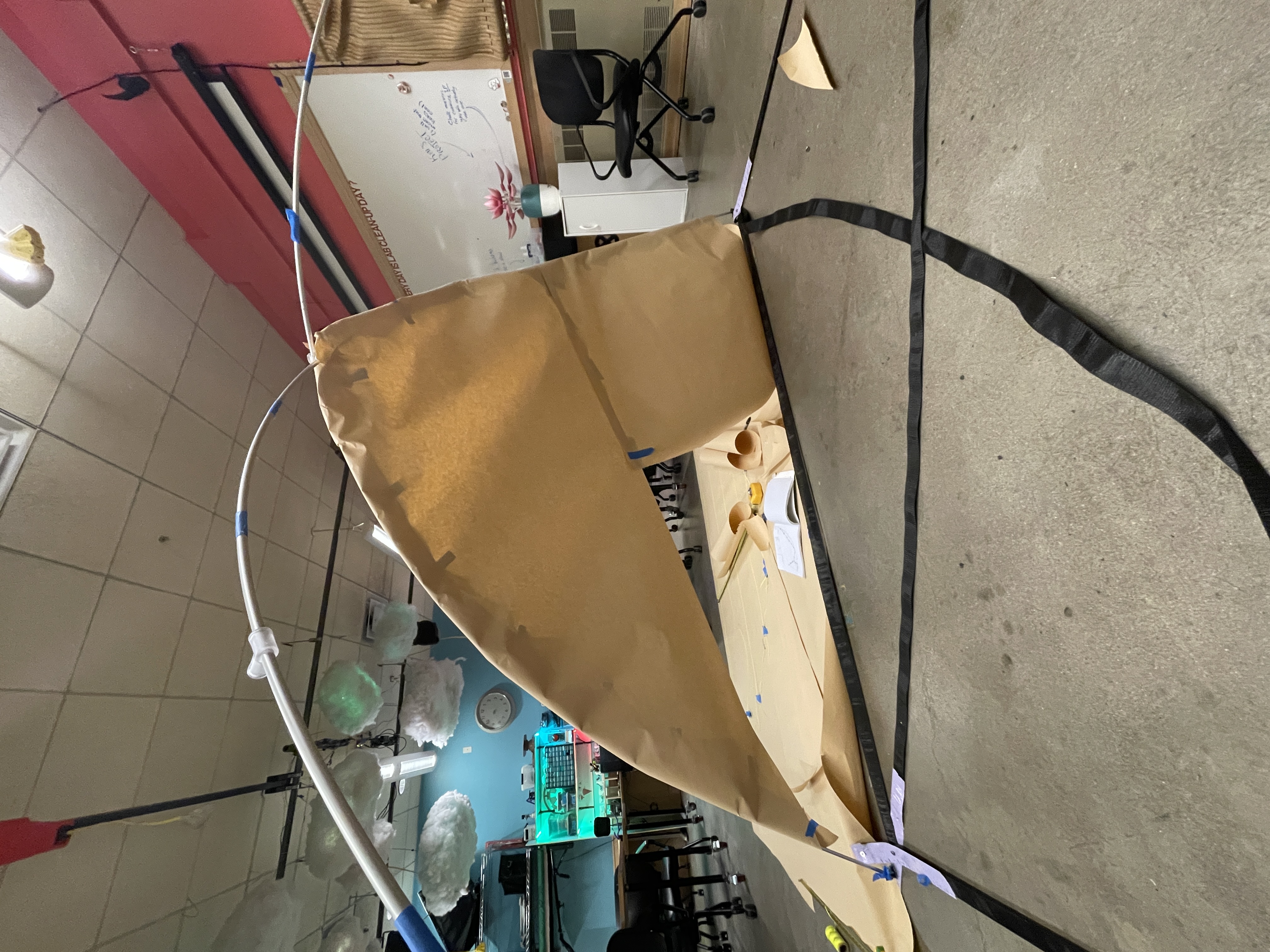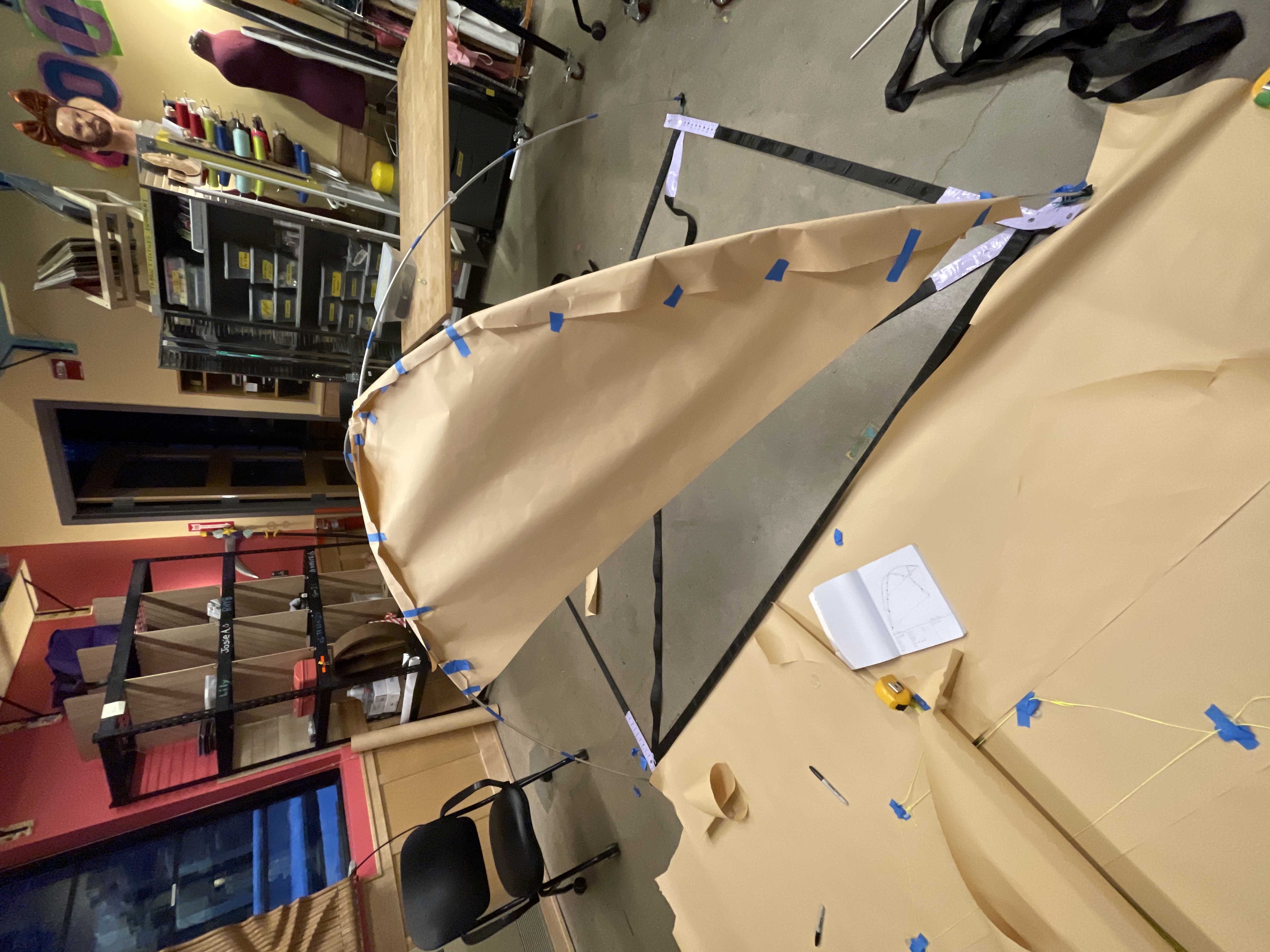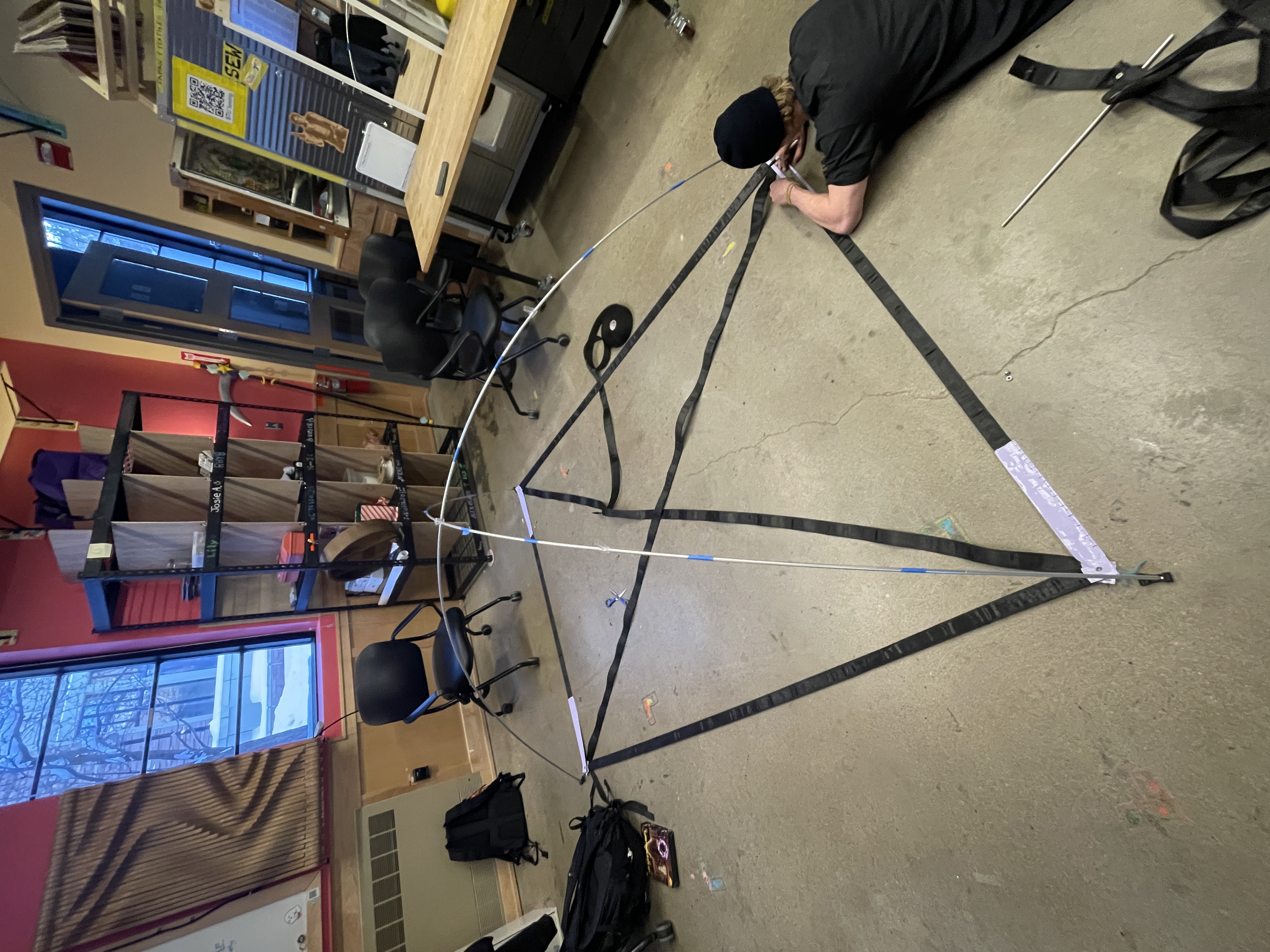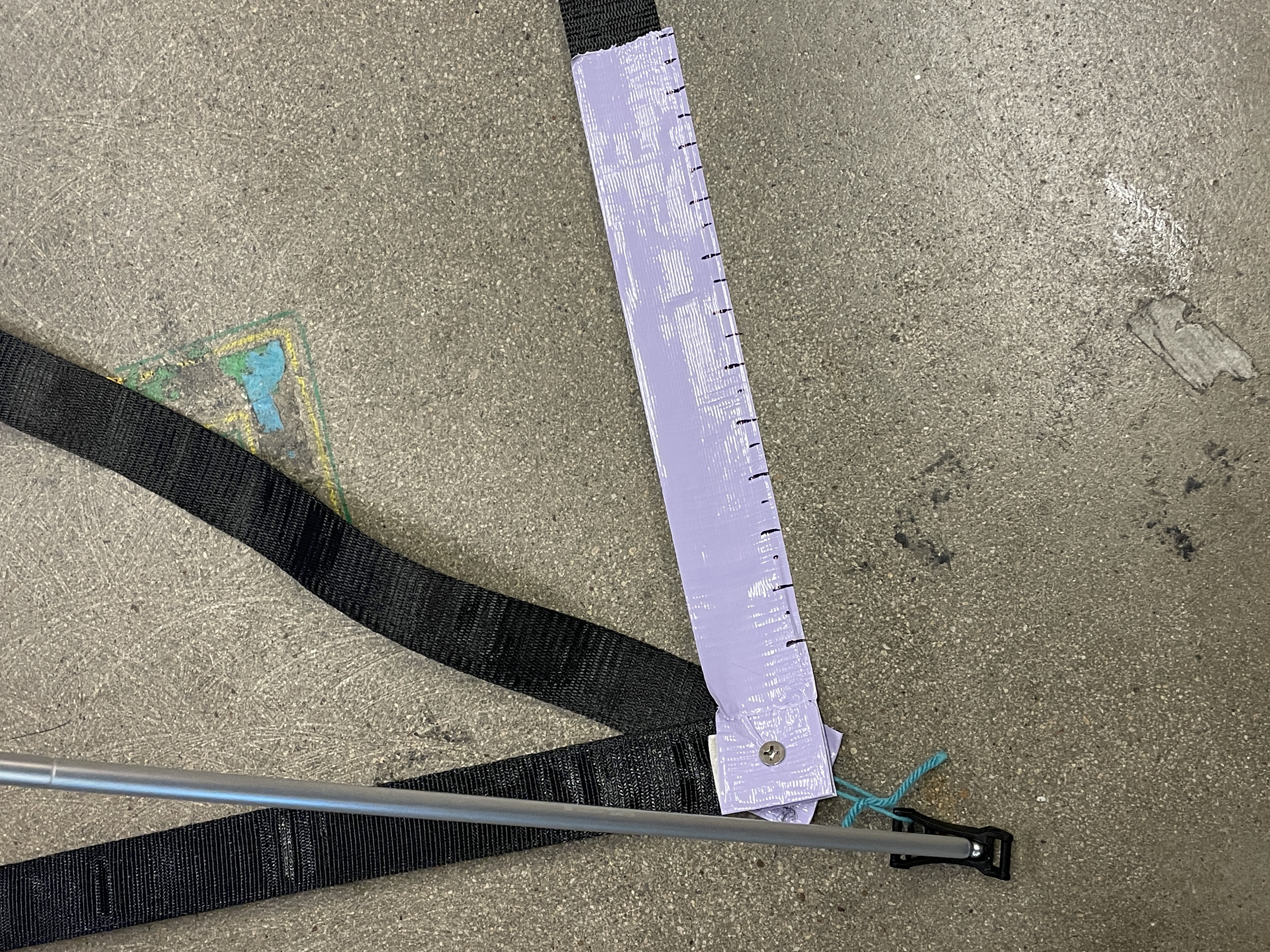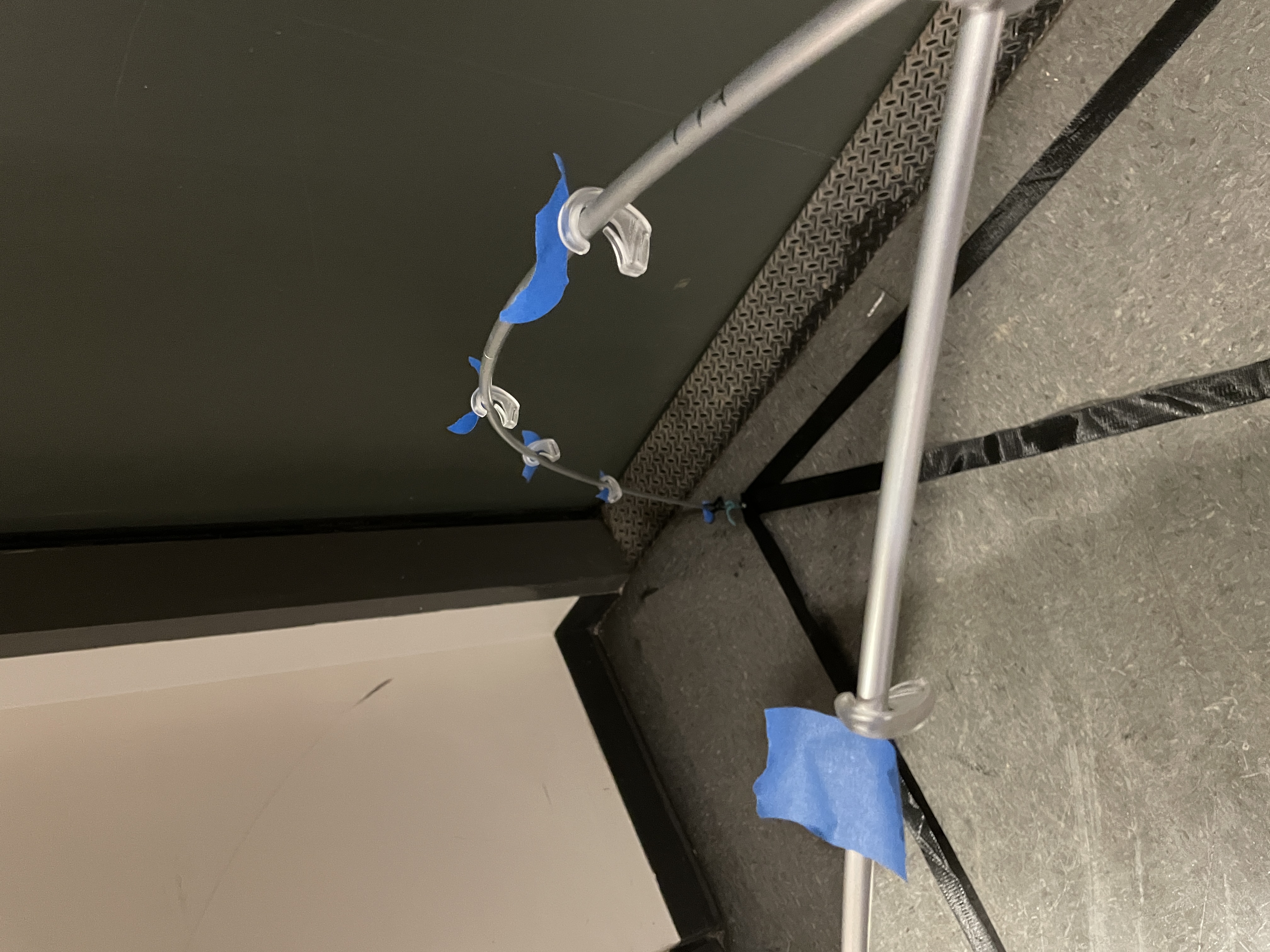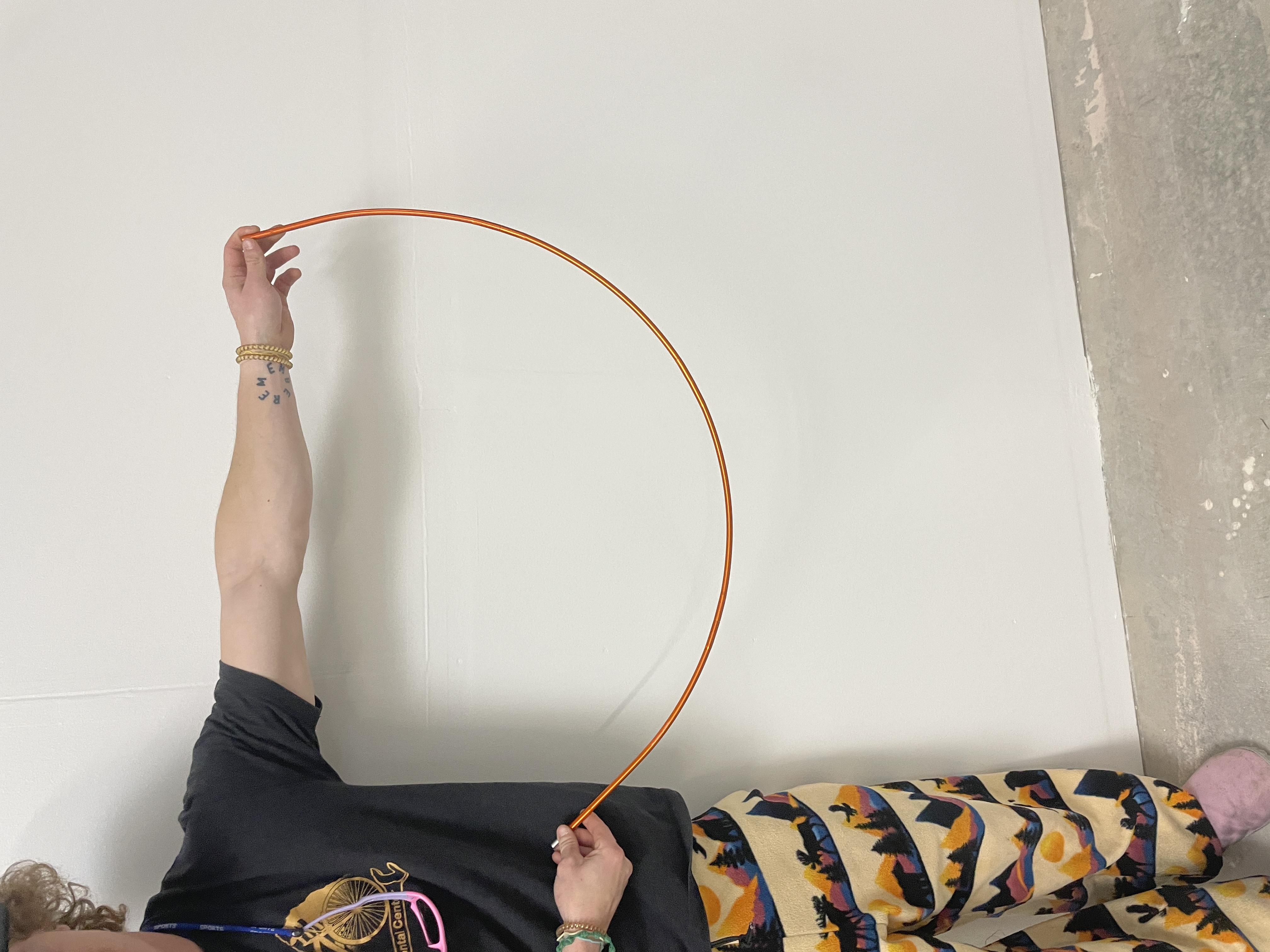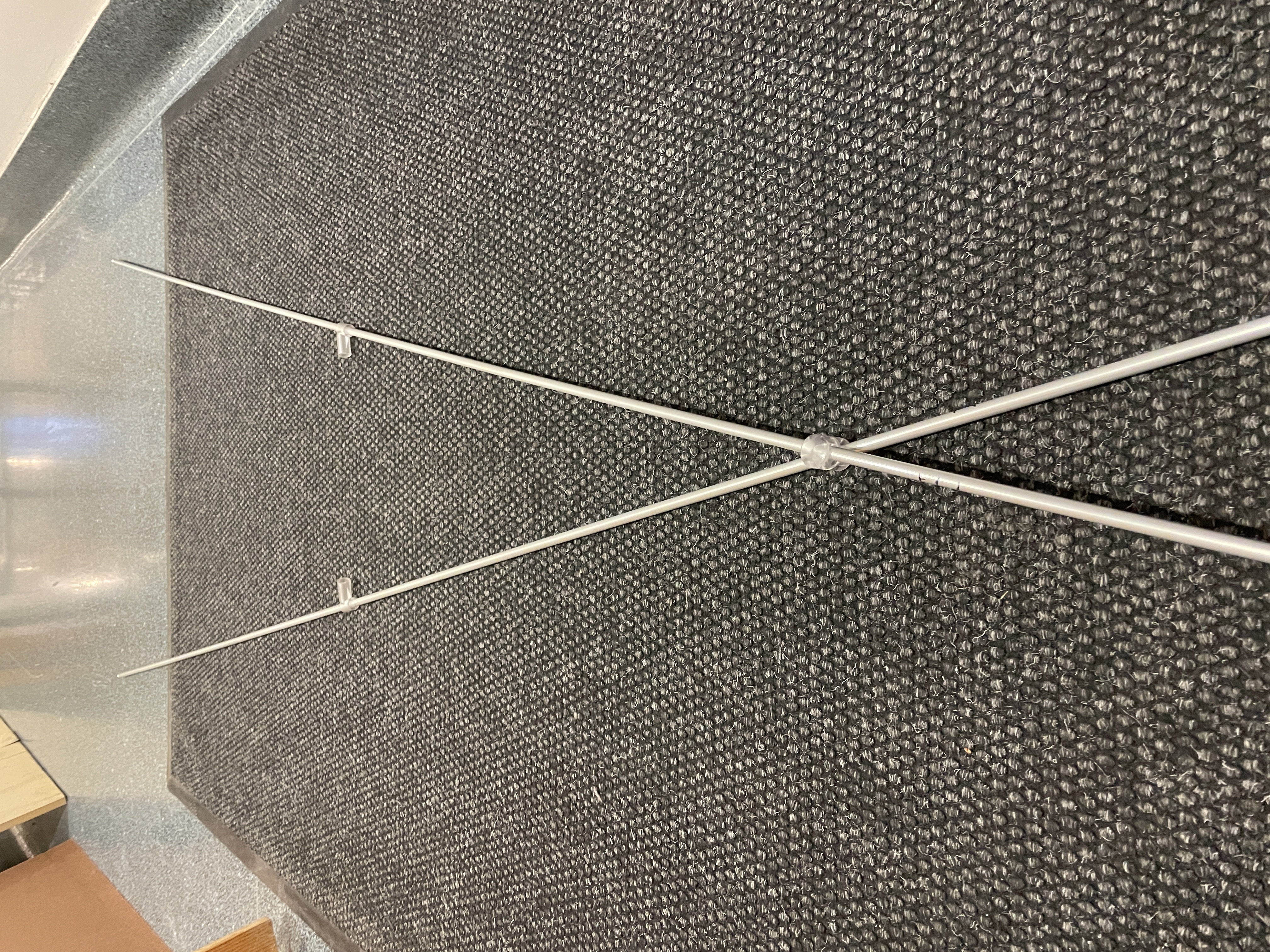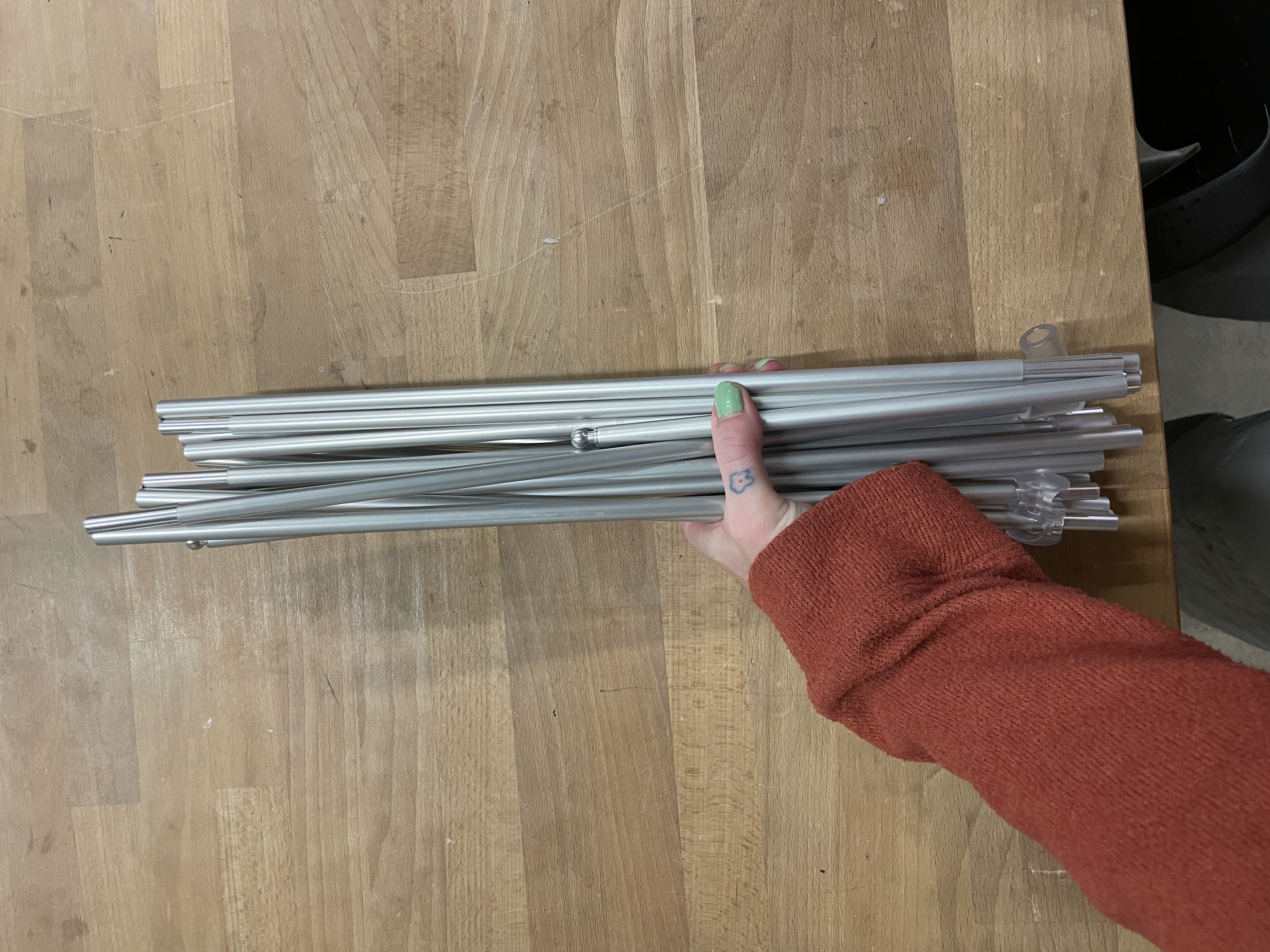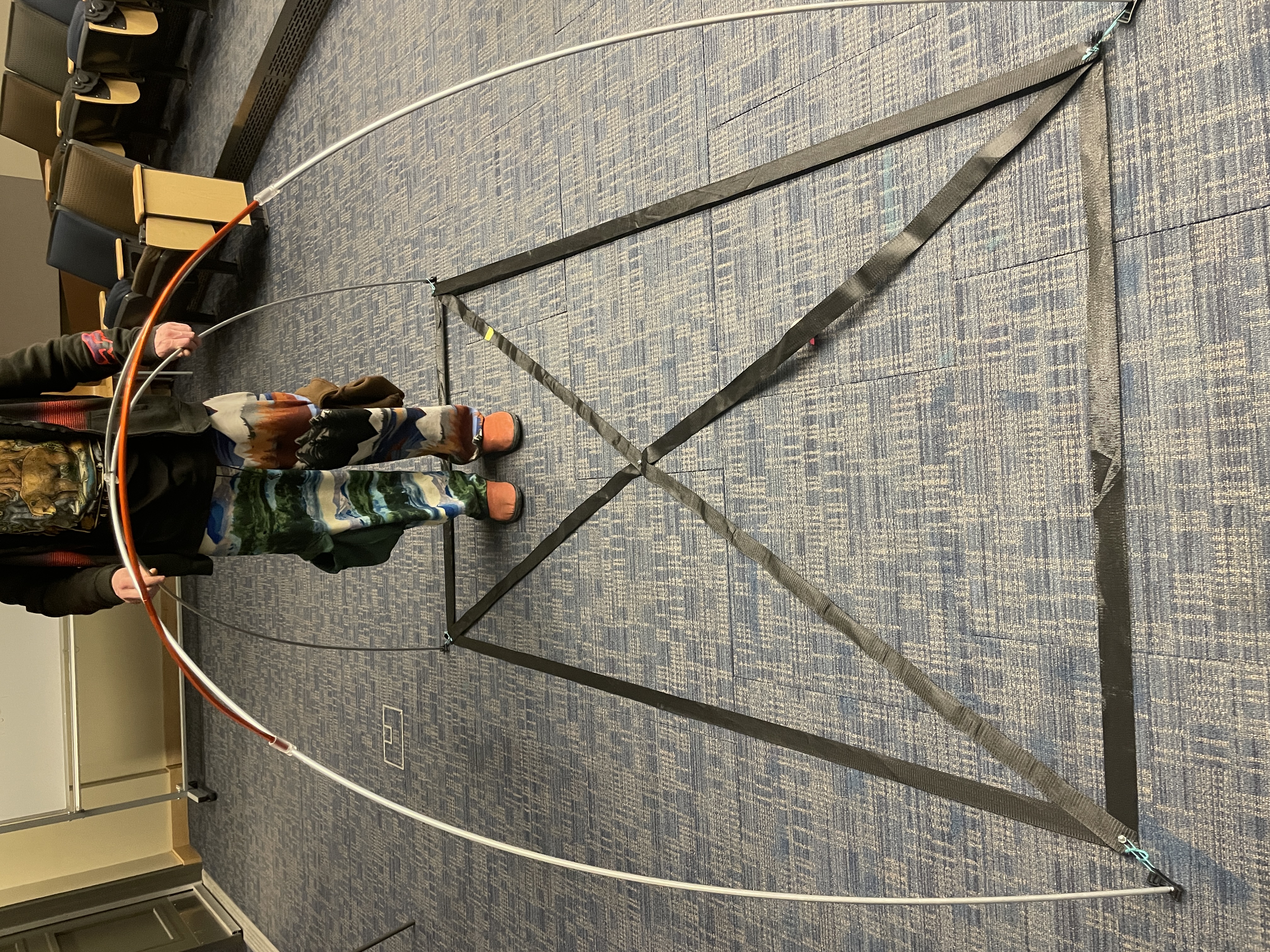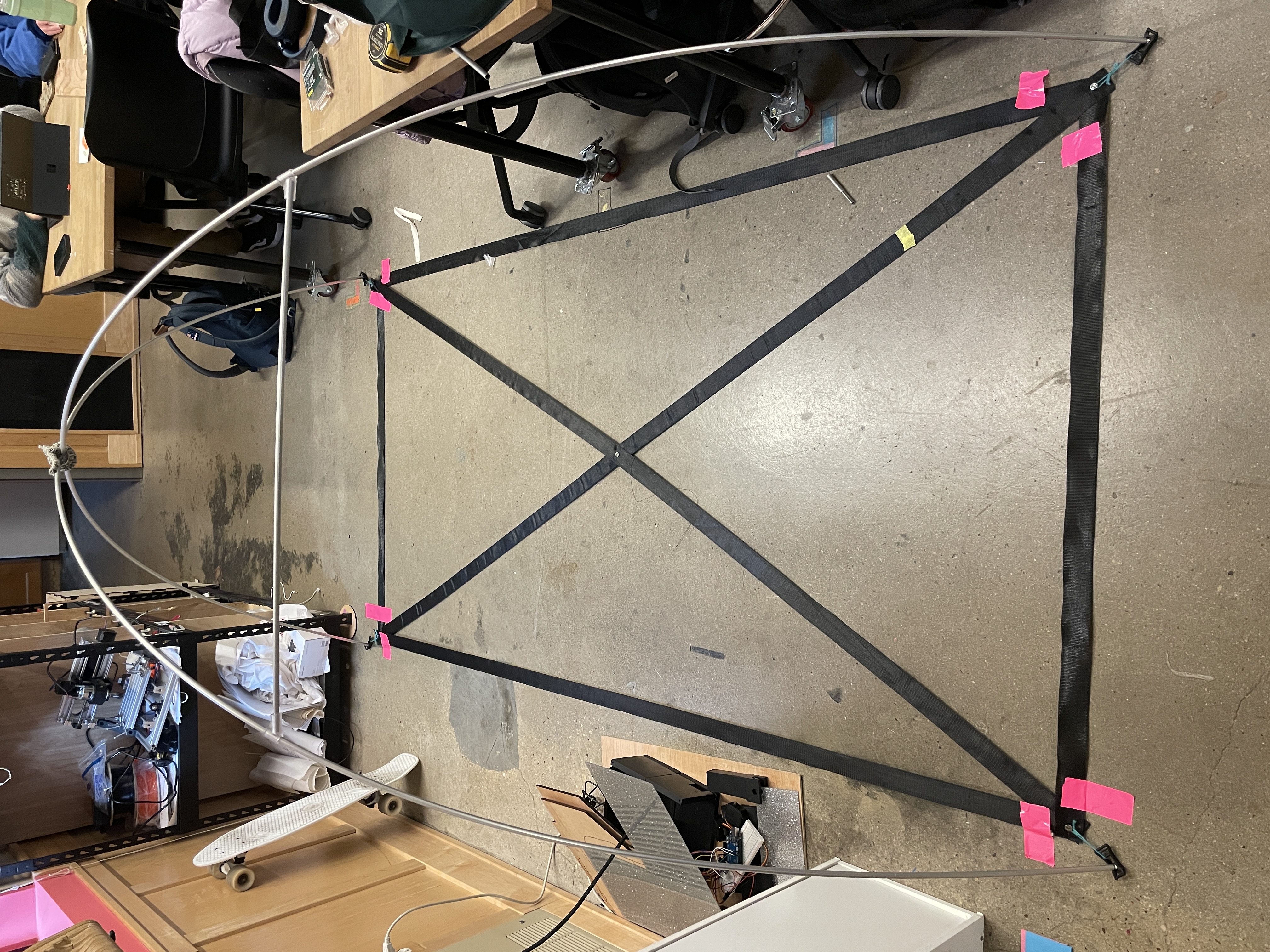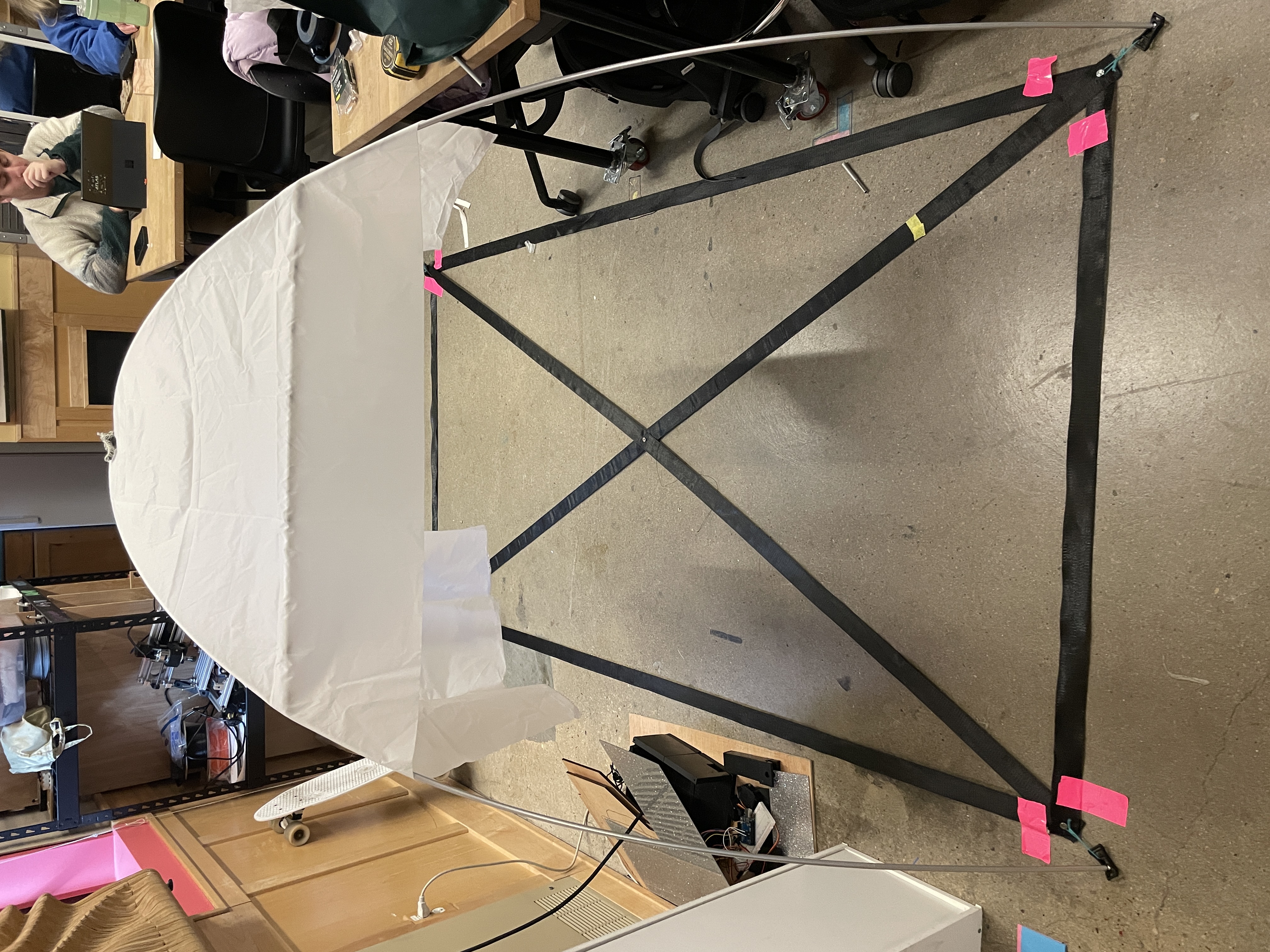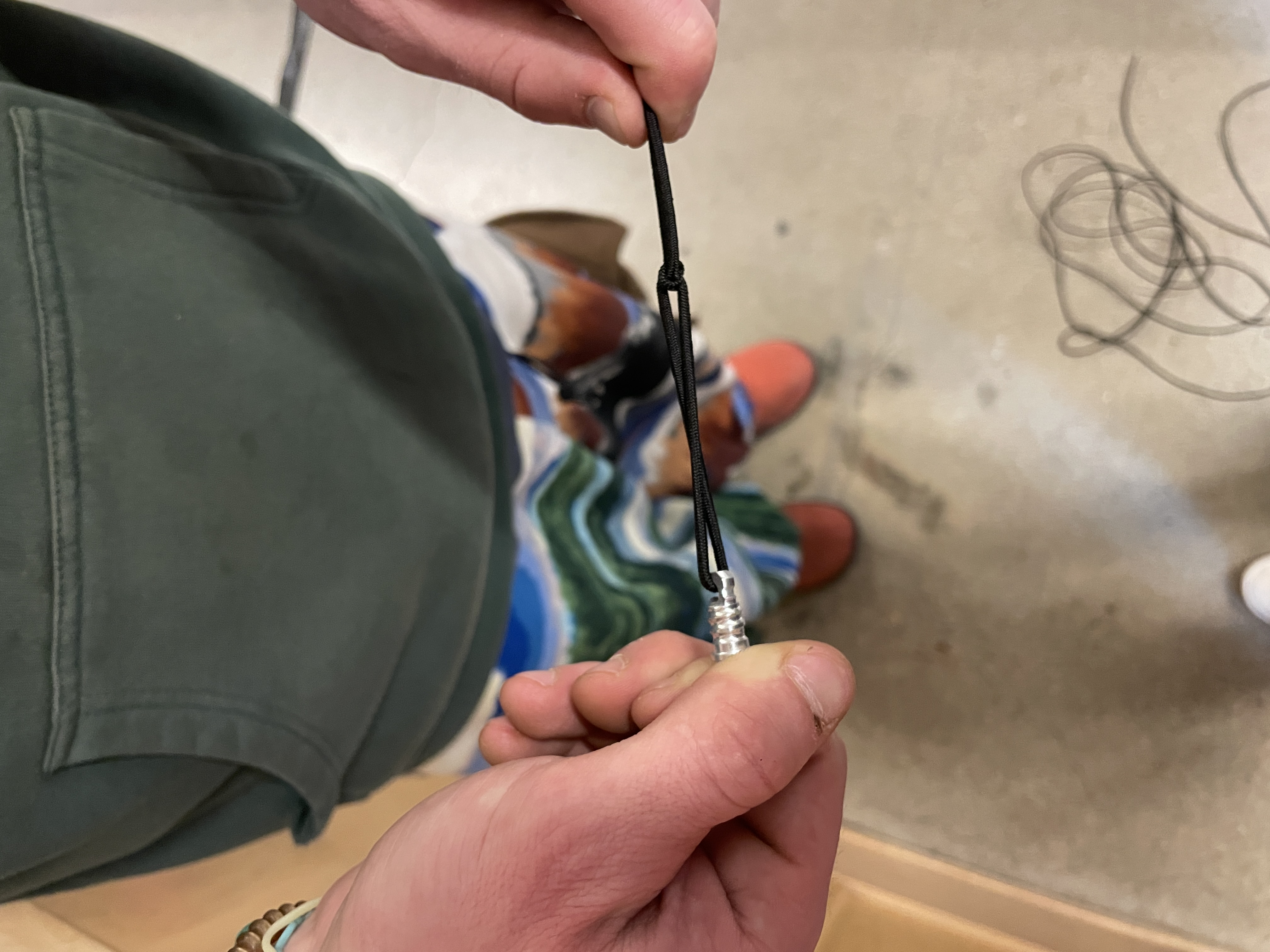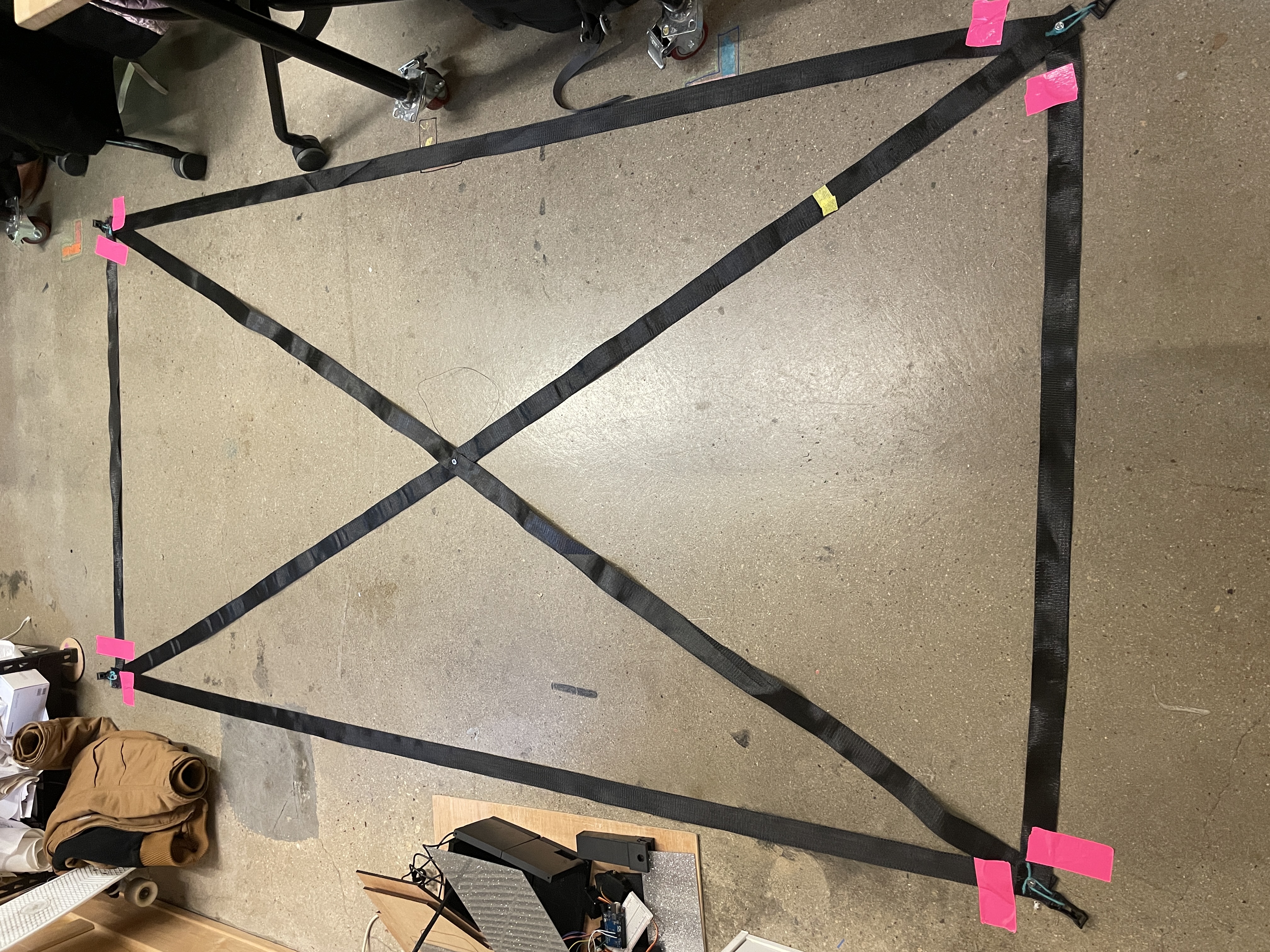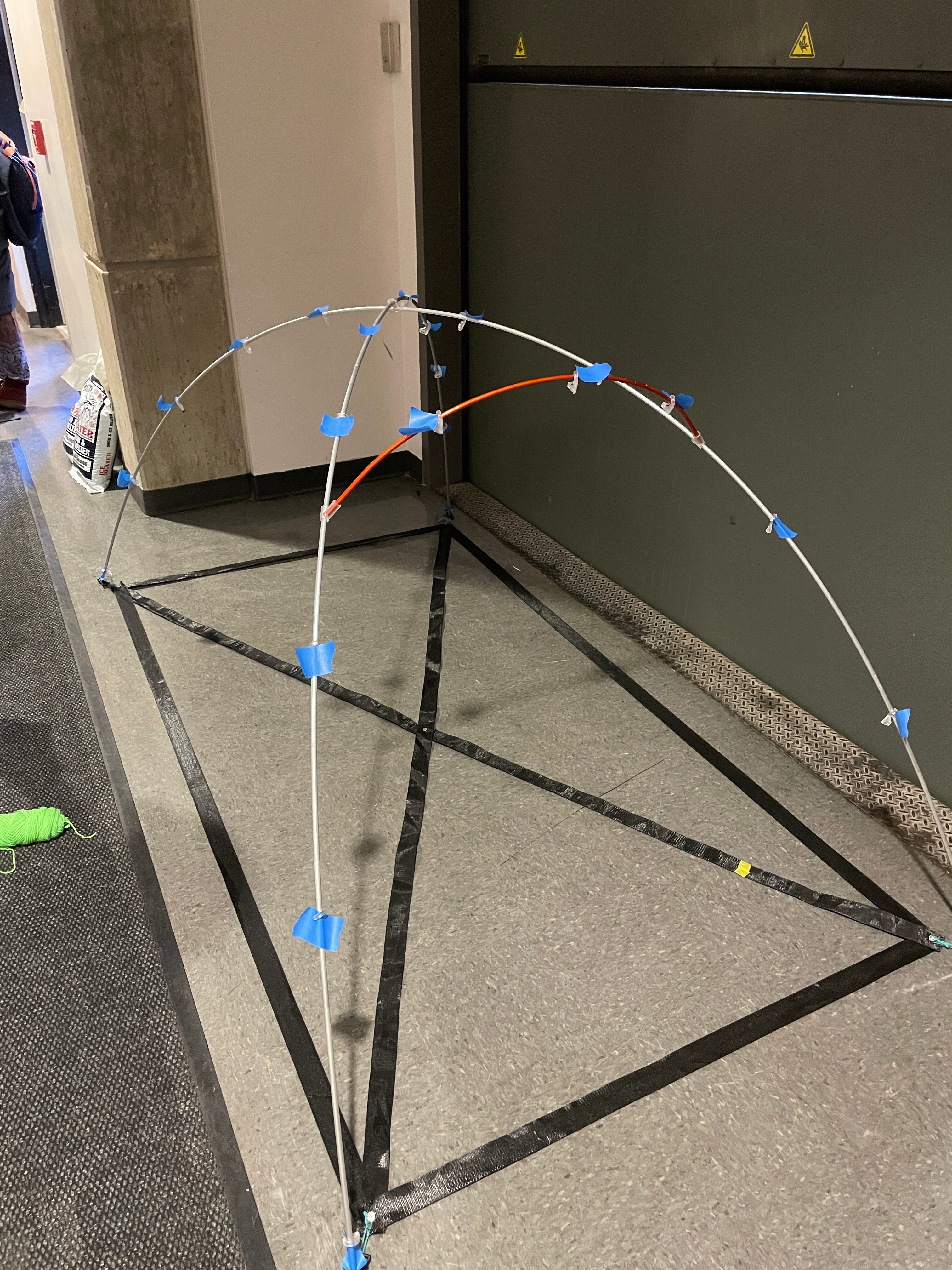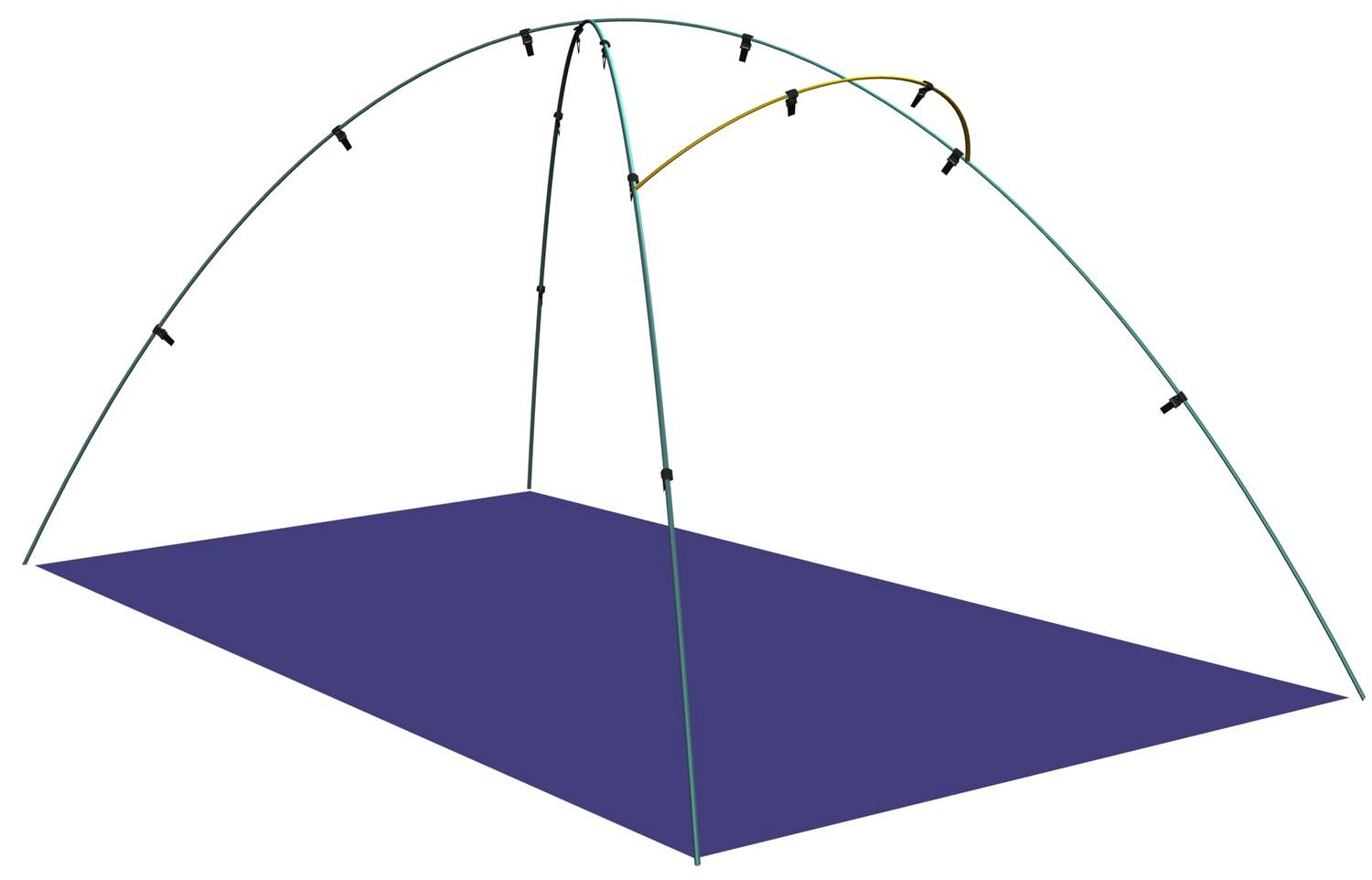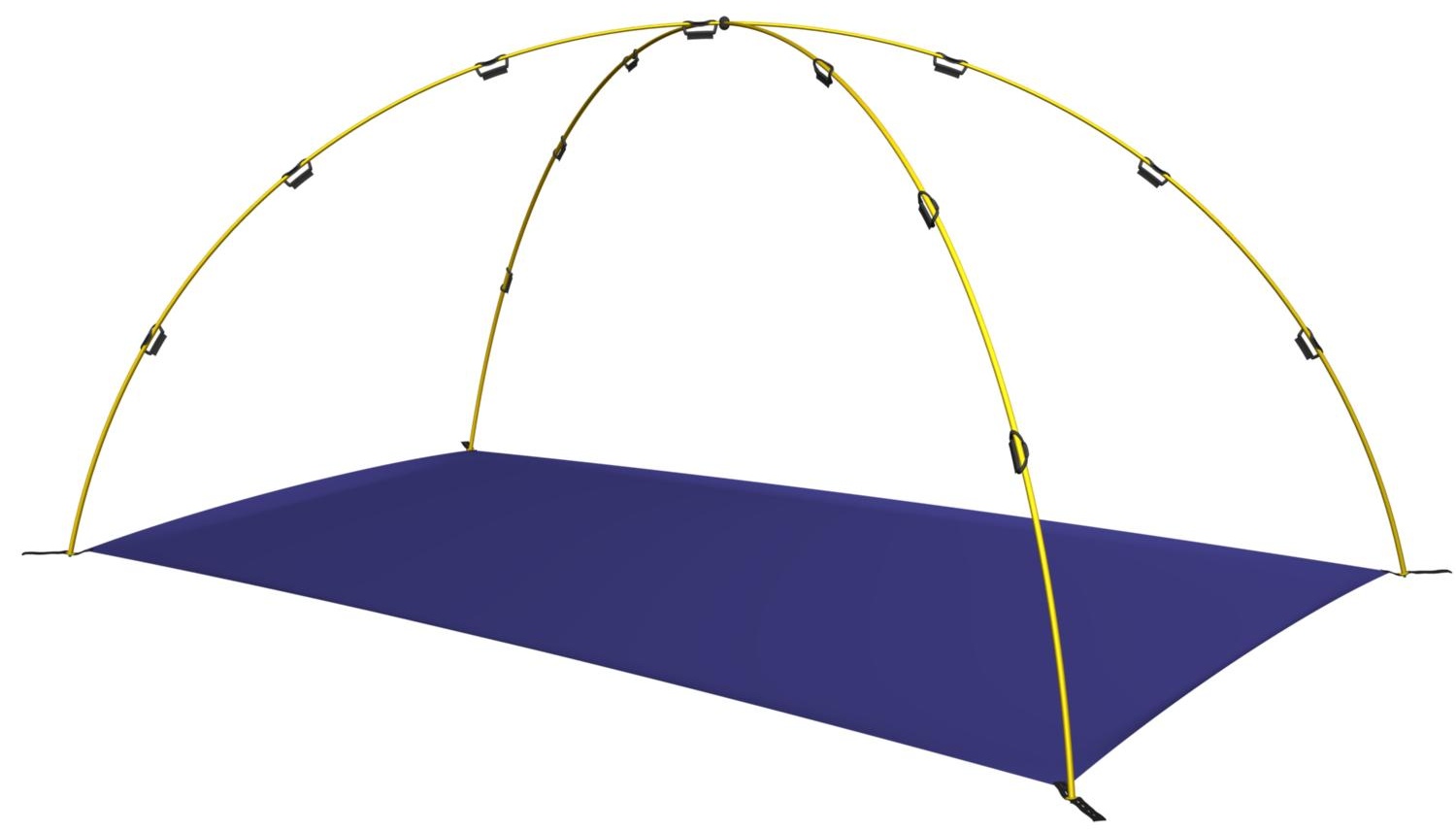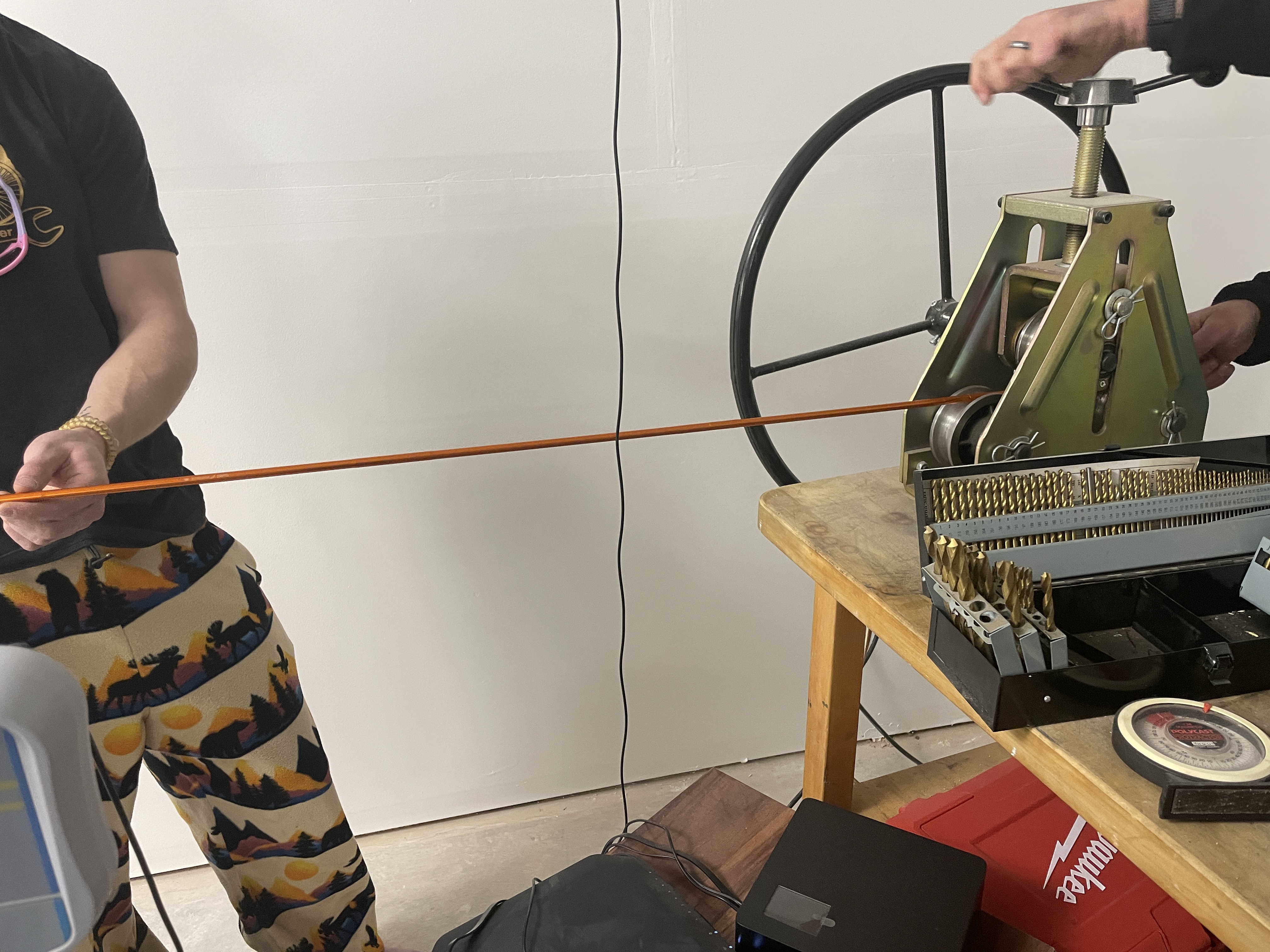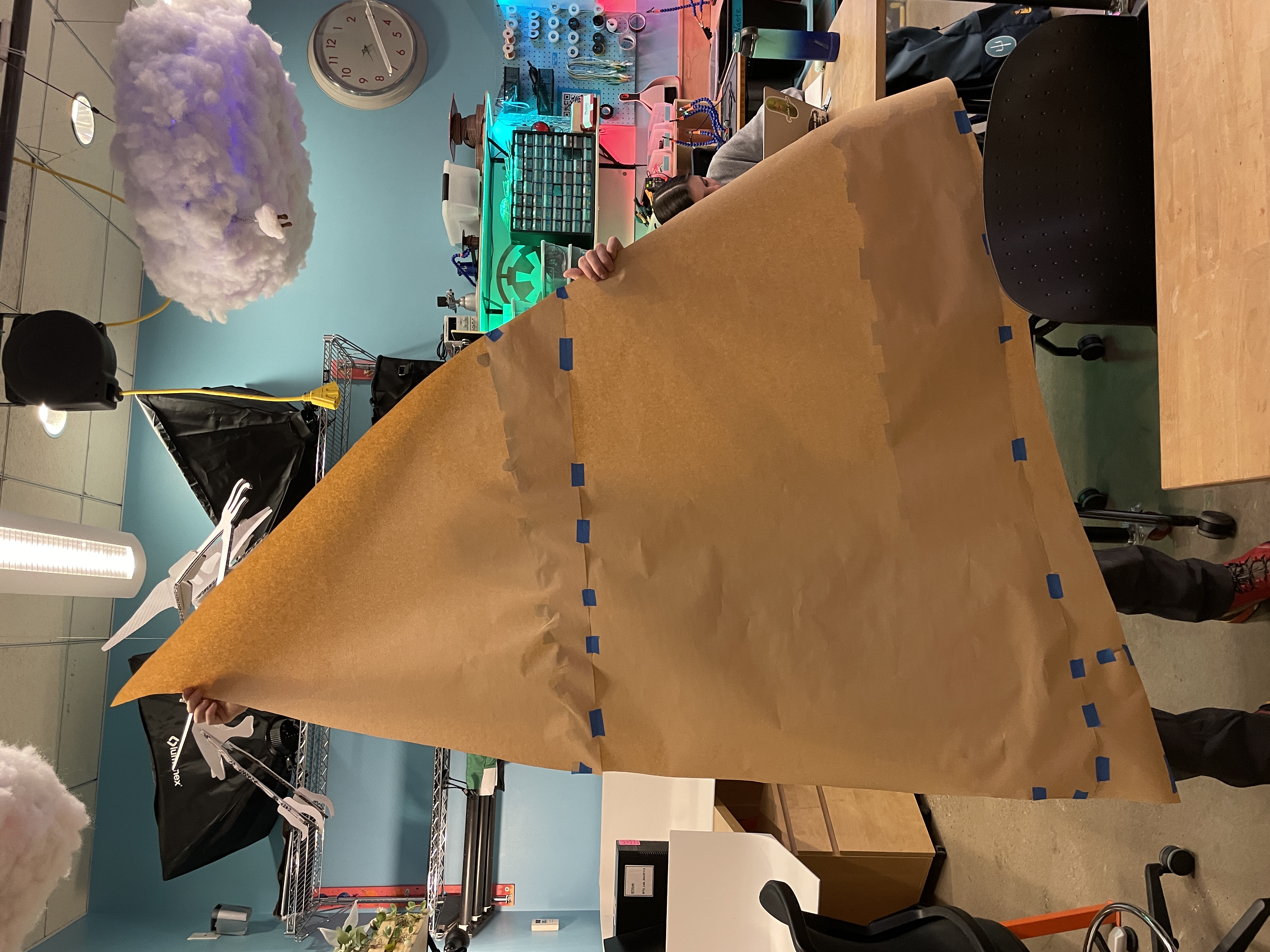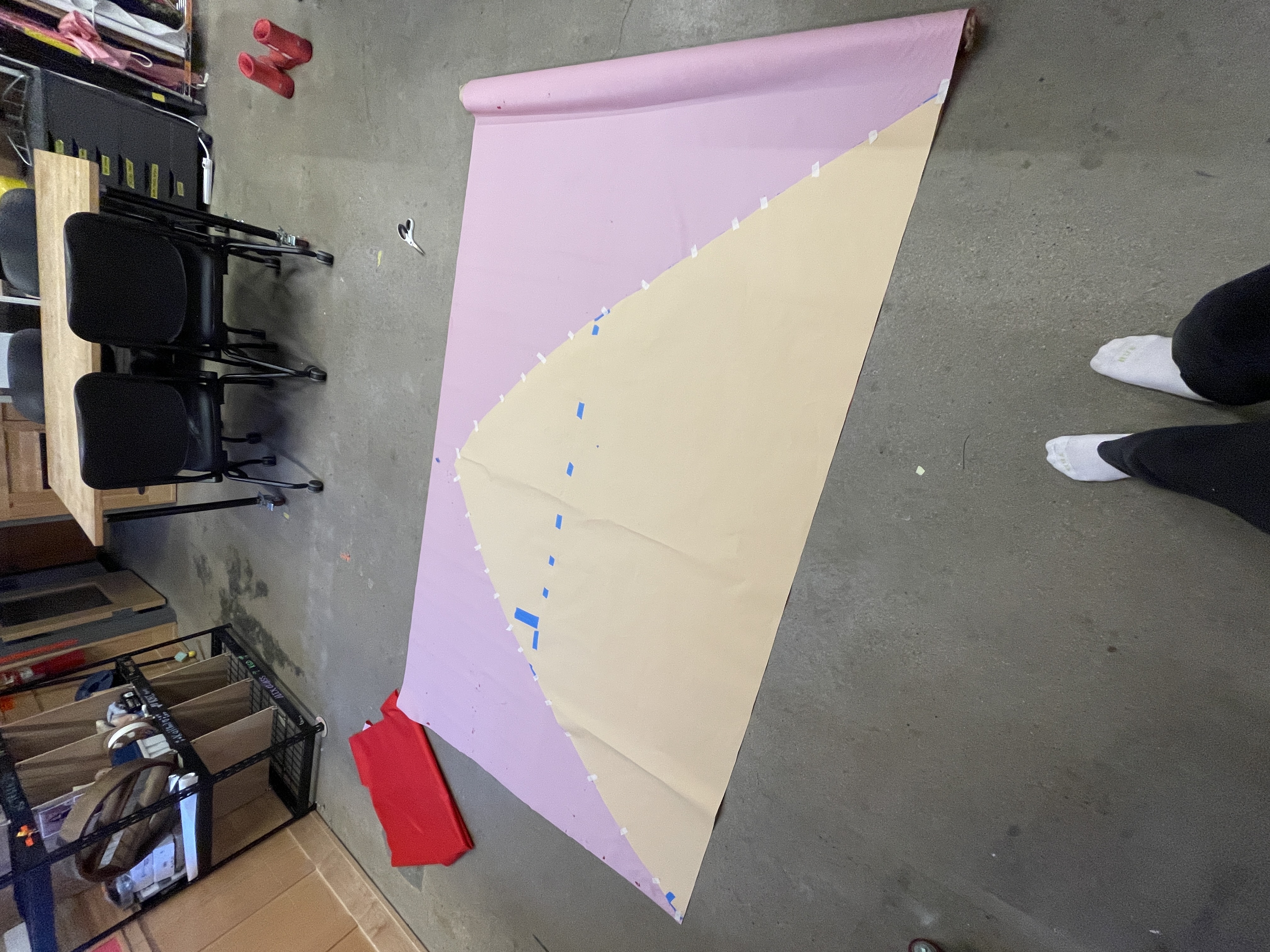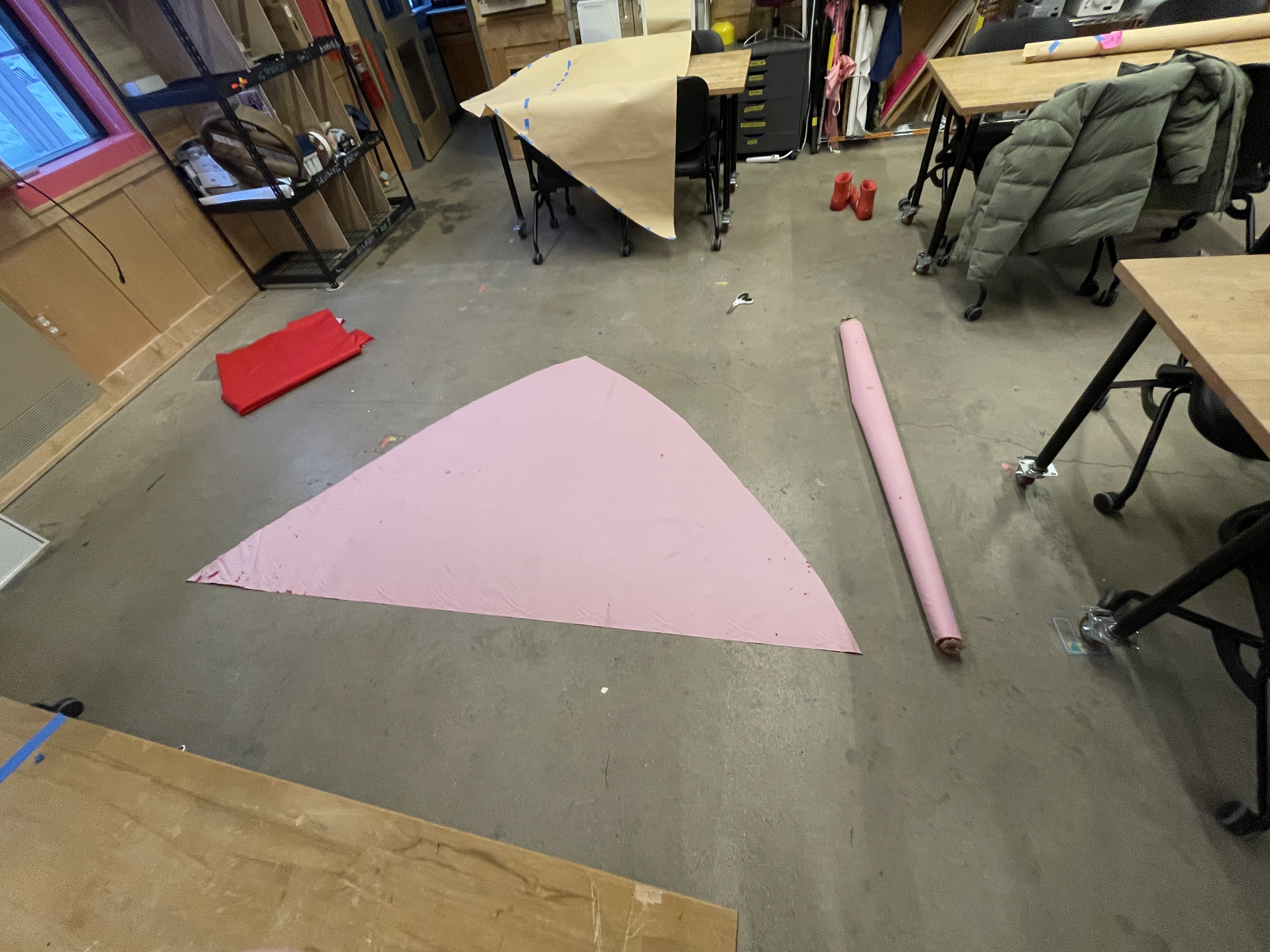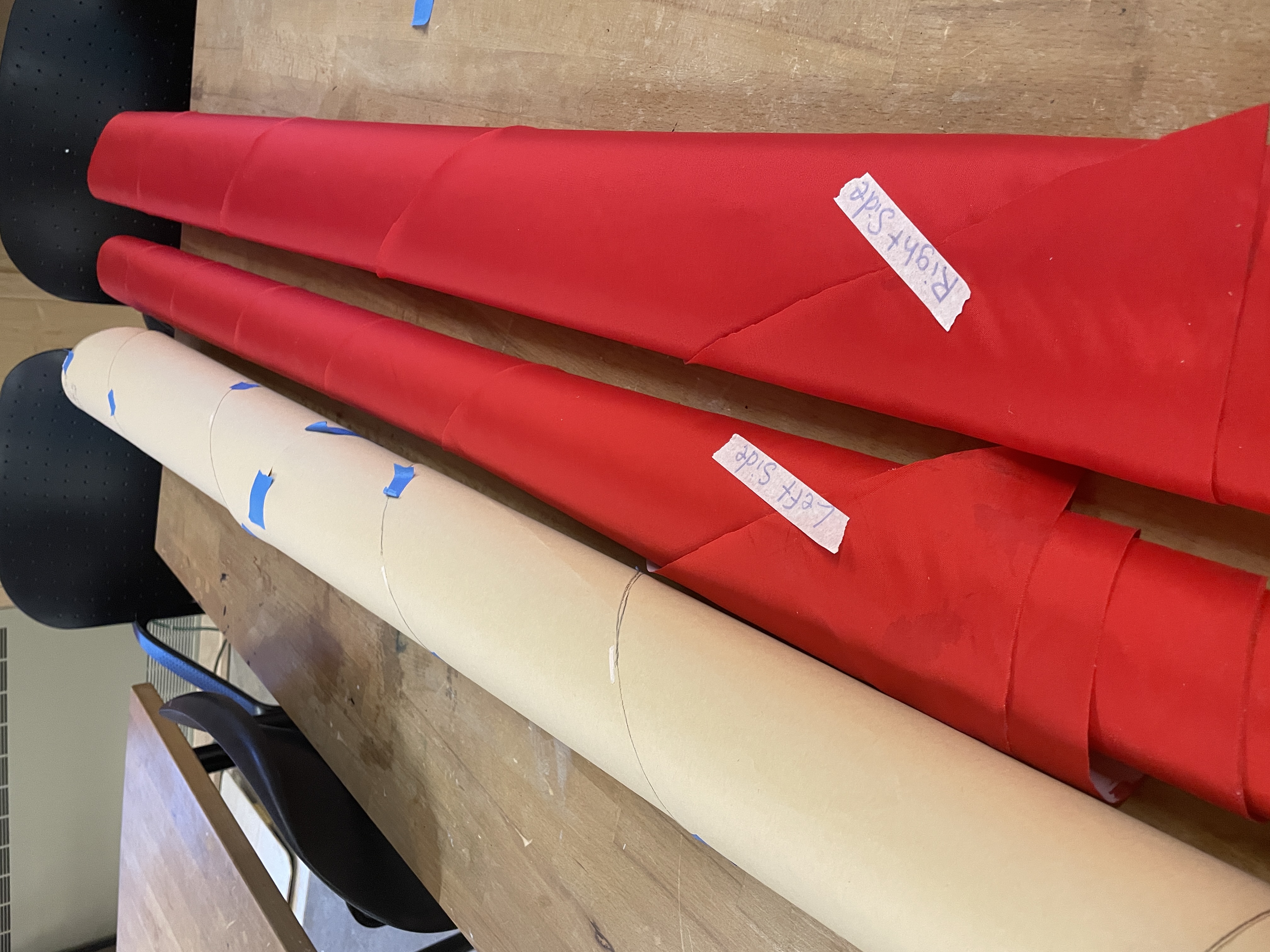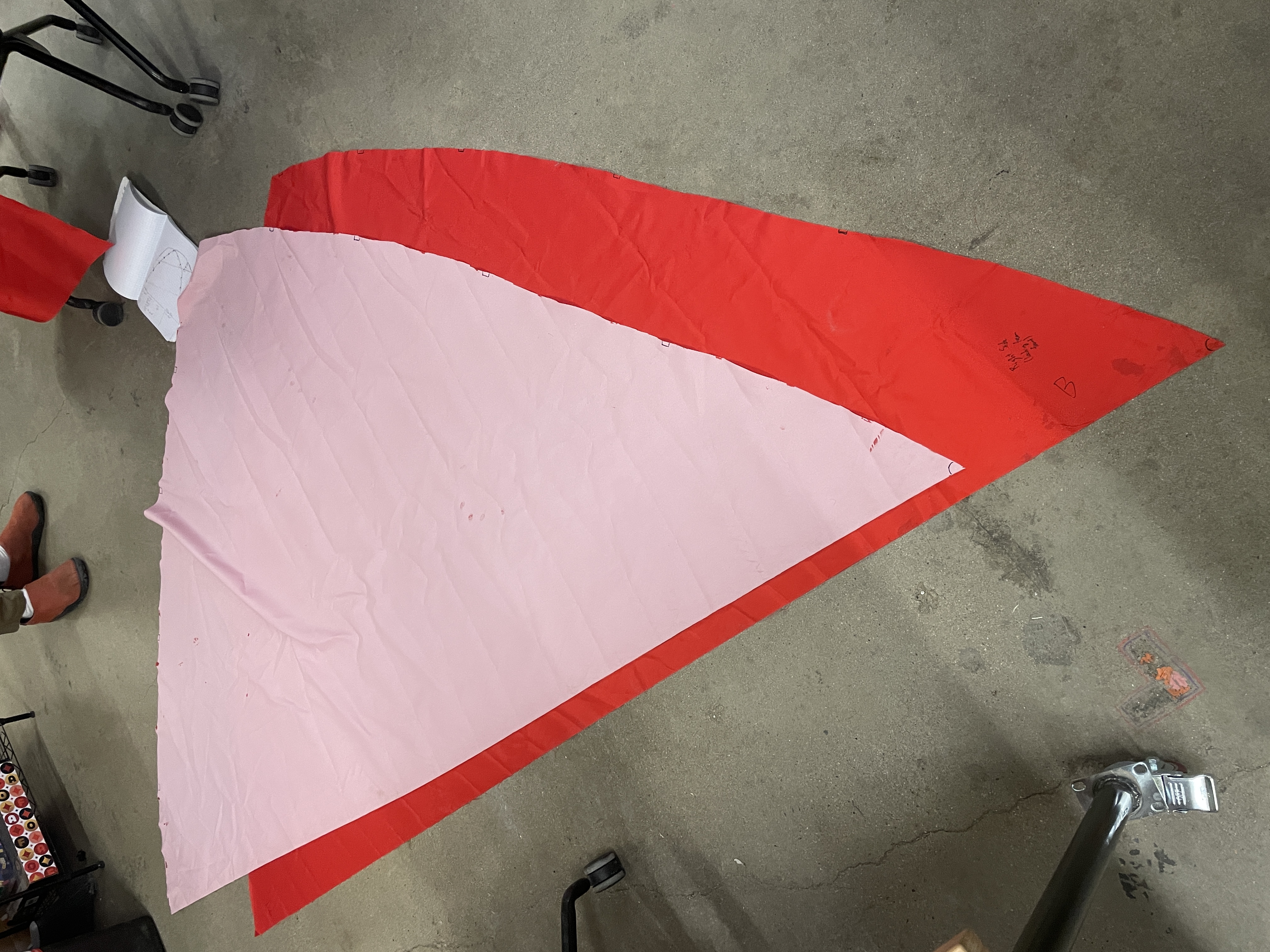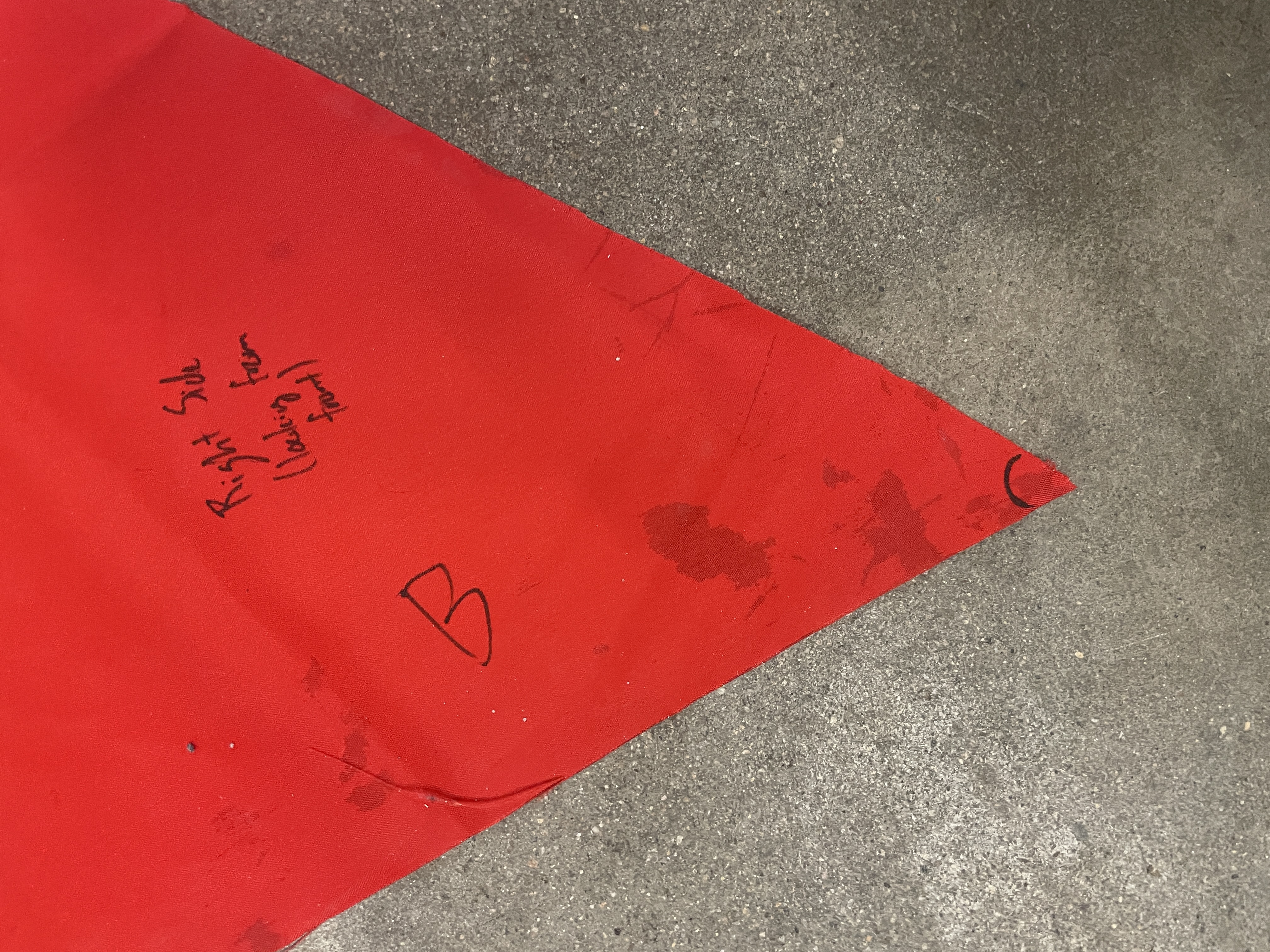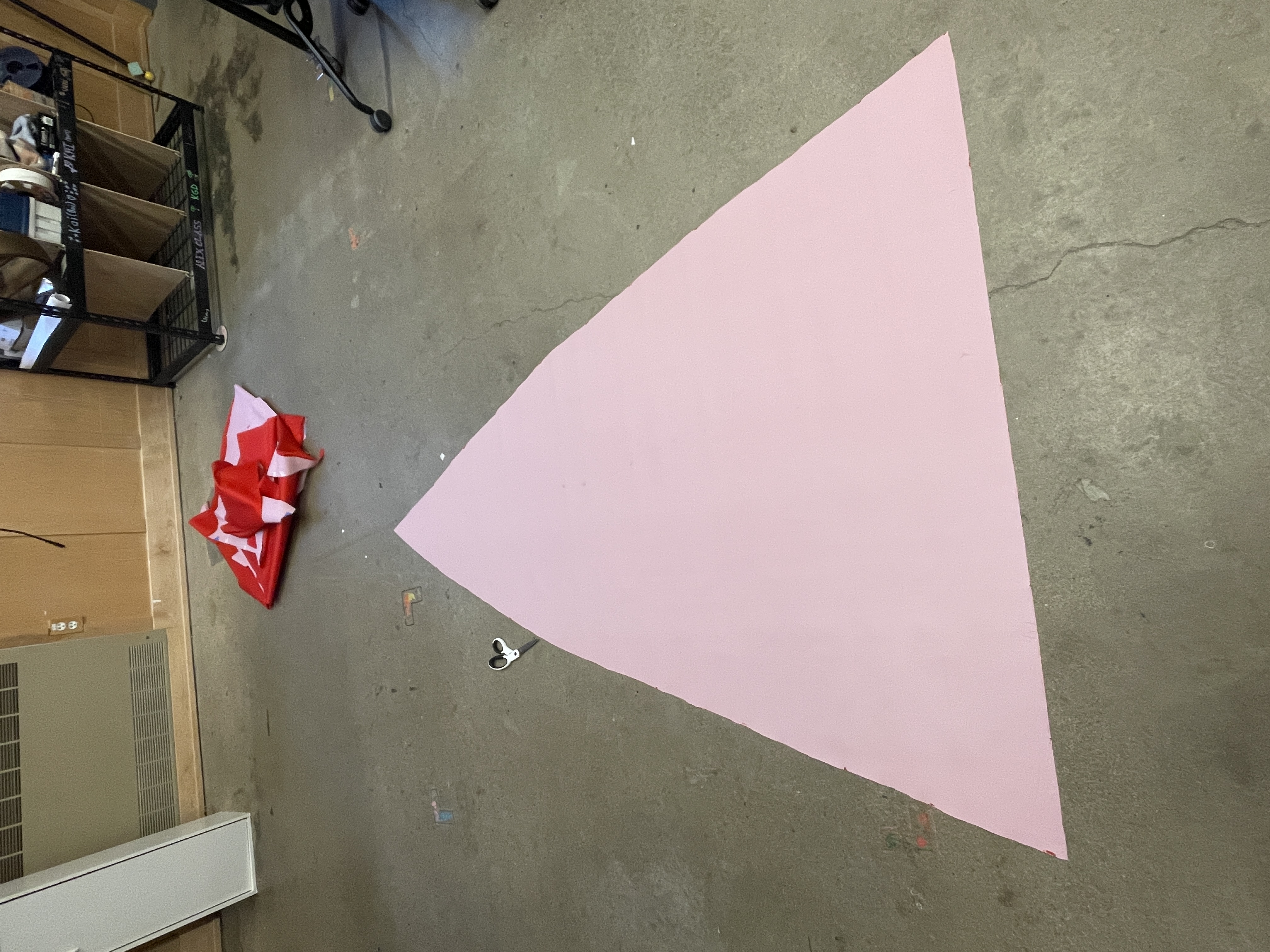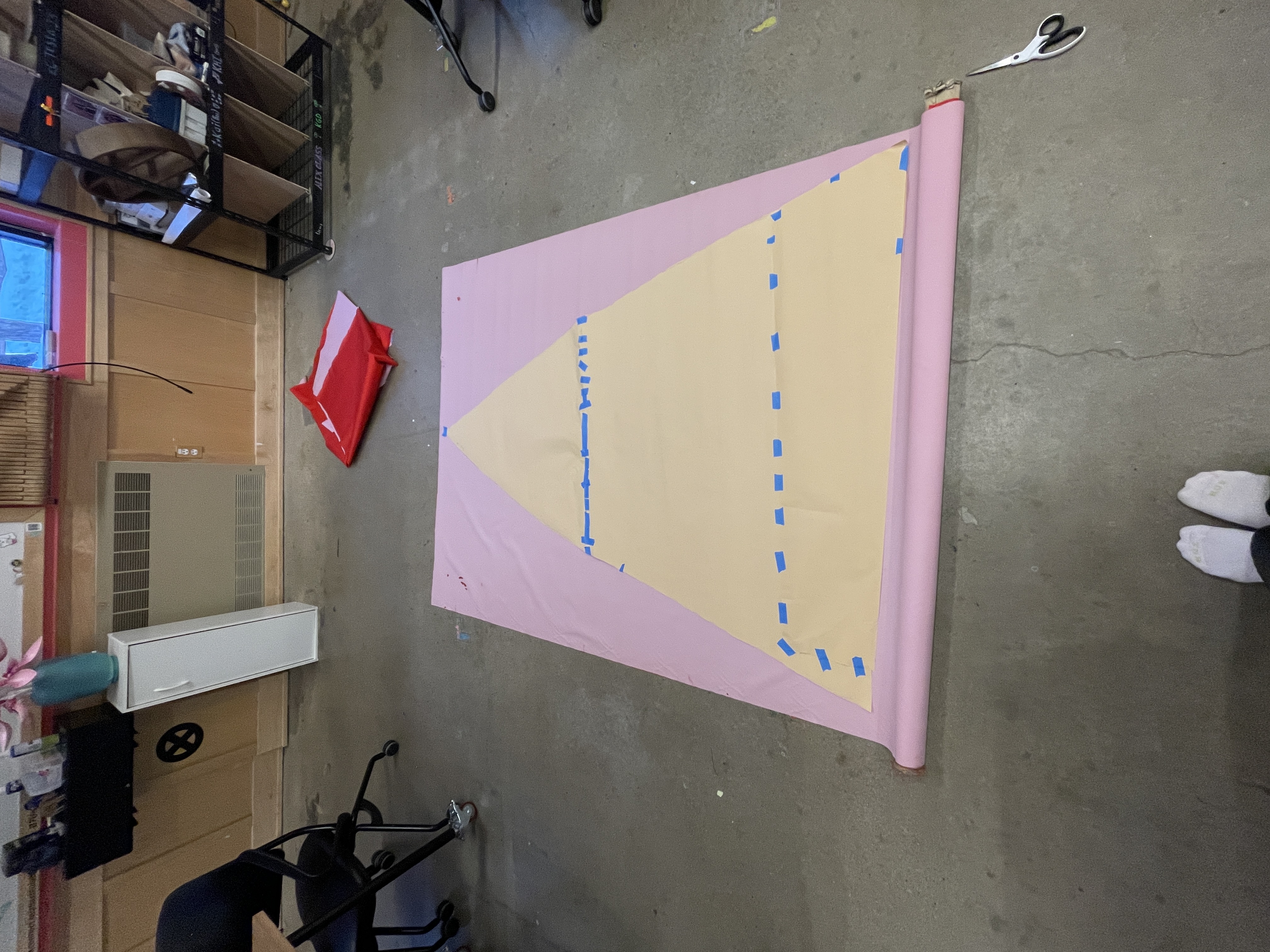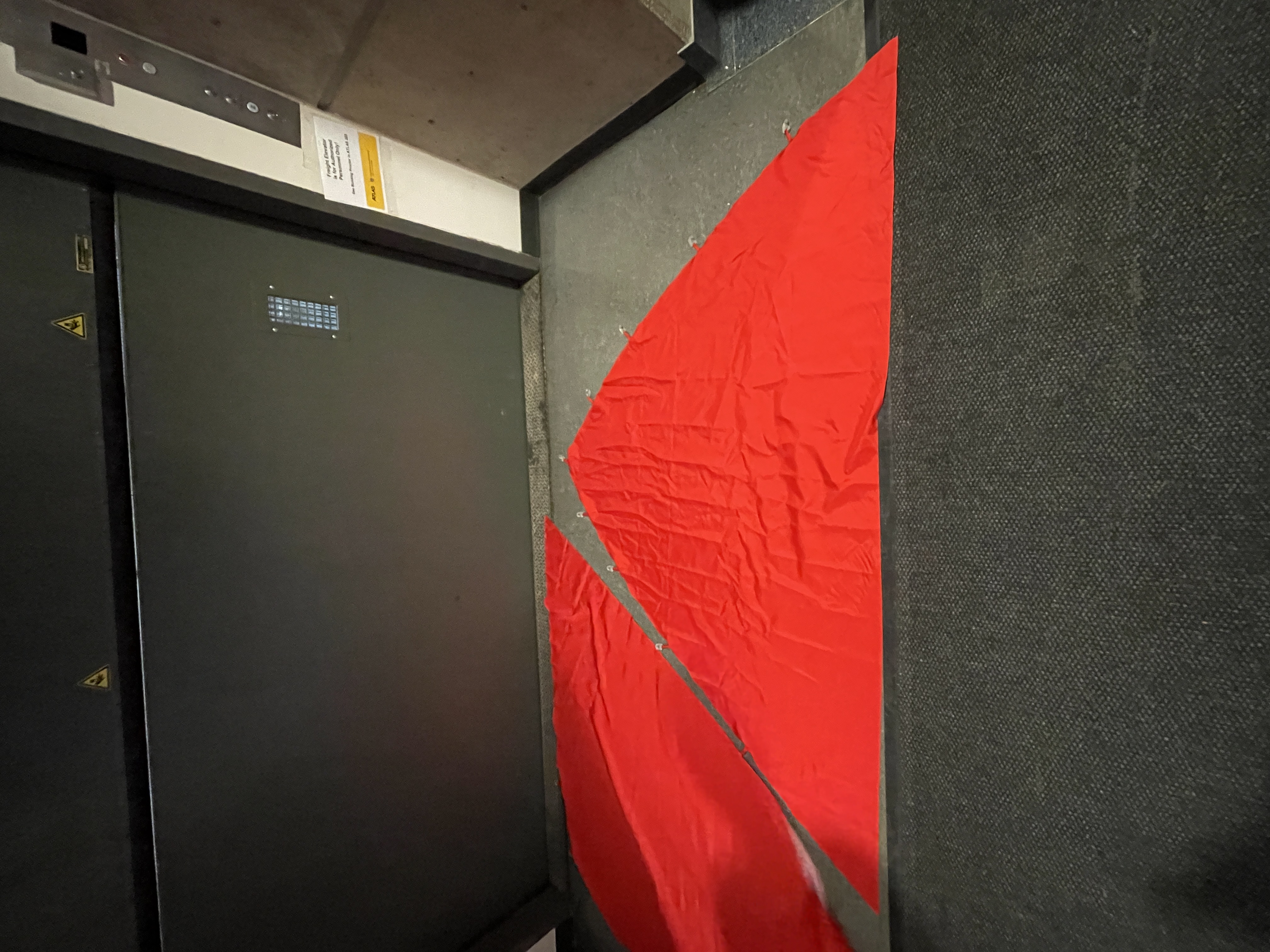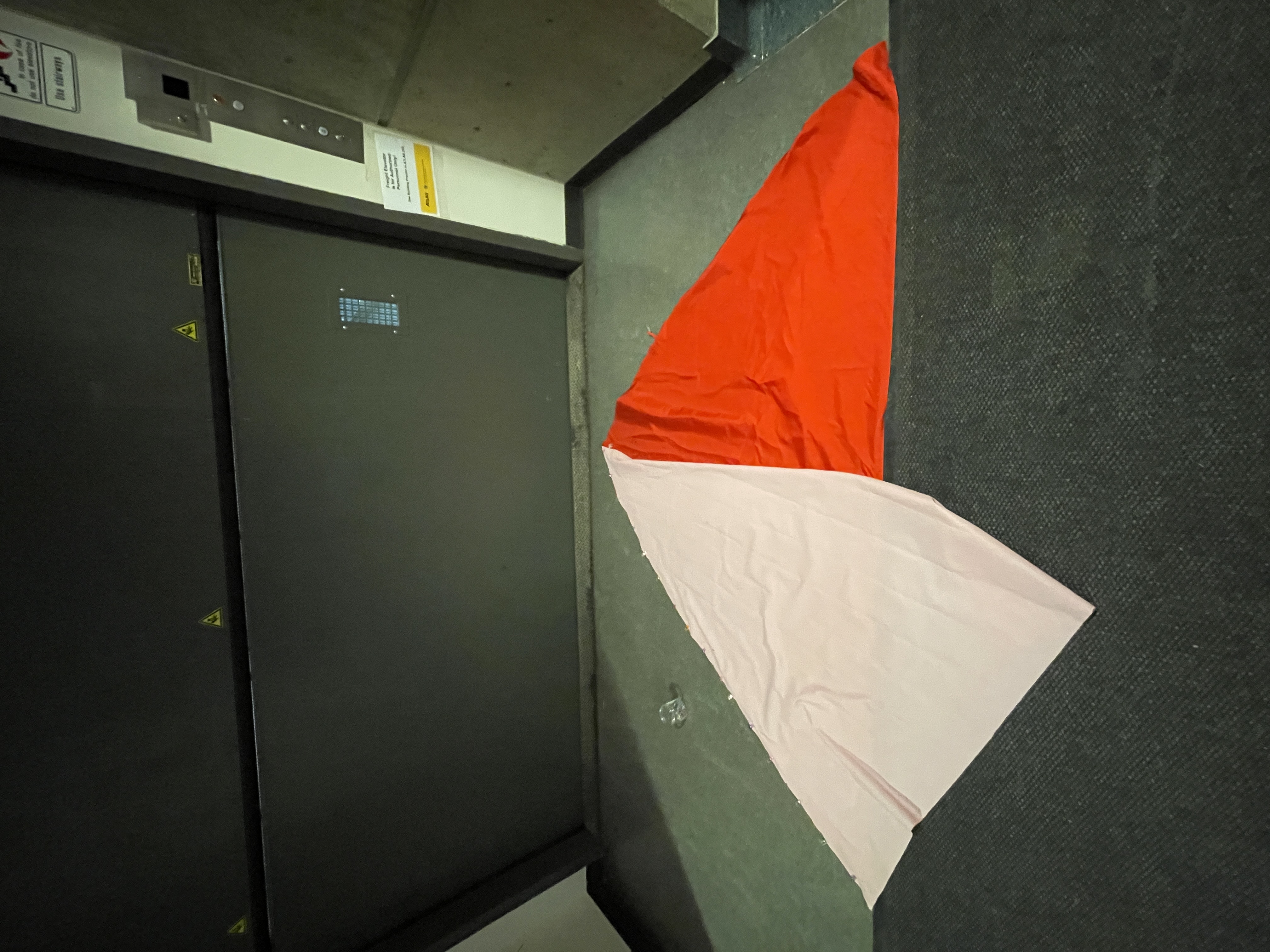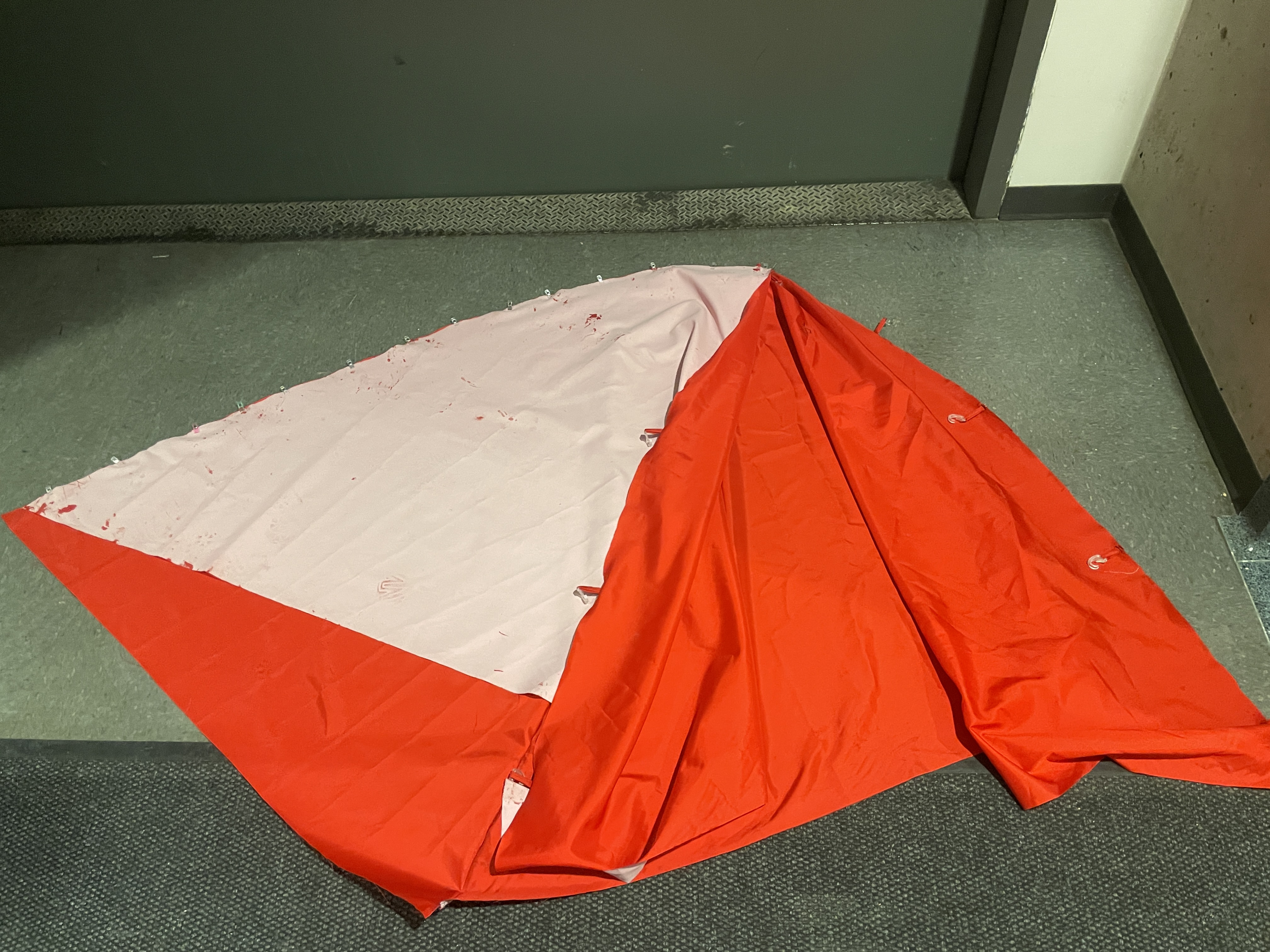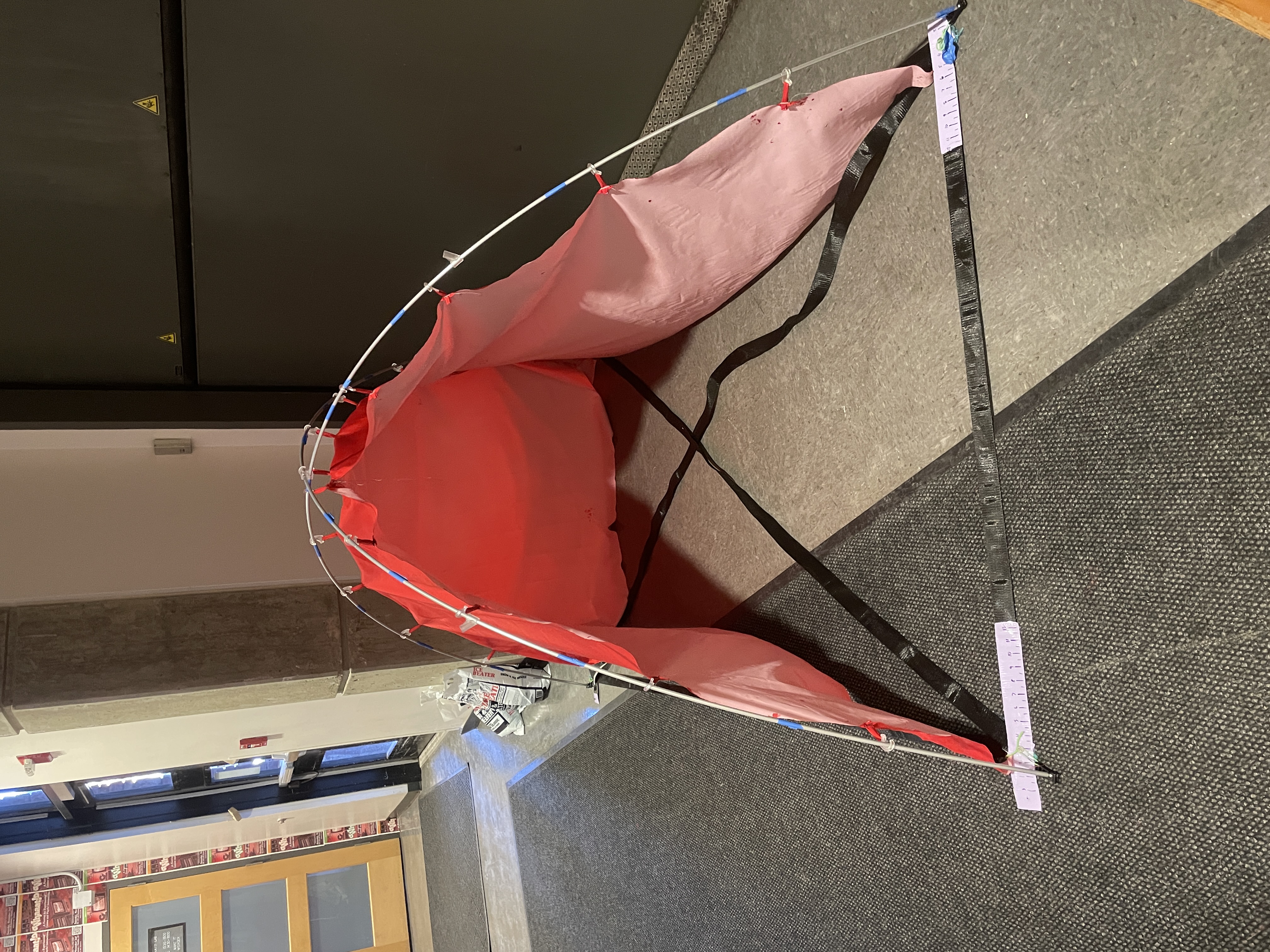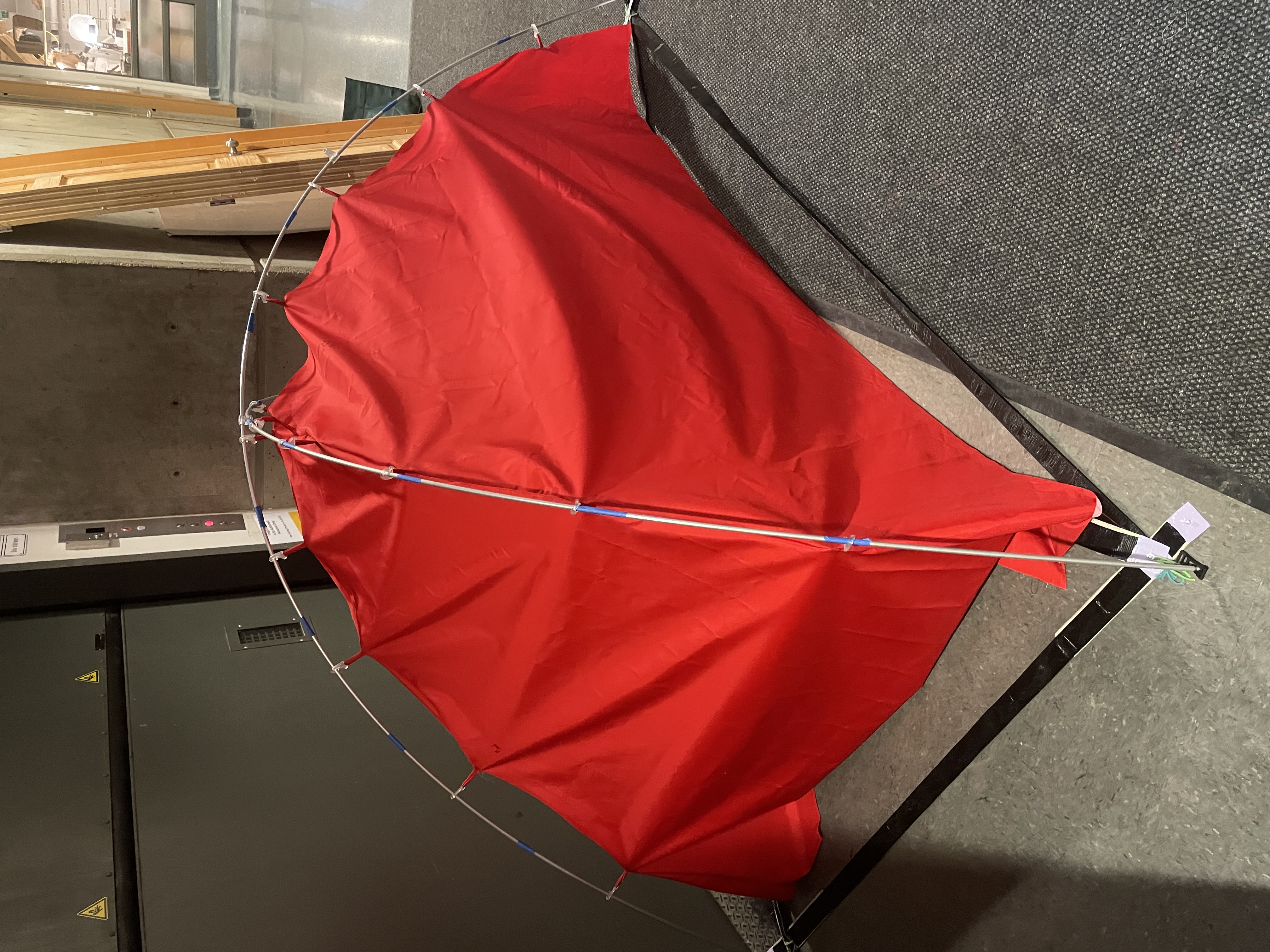Iteration 1
Our first iteration focused on establishing the conceptual design and early construction techniques for the Nova Tent. This phase laid the groundwork for all subsequent developments.
Goals and Objectives
In this initial phase, we aimed to:
- Pole Structure
- Tent Dimensions
- Clip Placement
- Paper Patterning Basics
- Lighting System

Patterning
The design process began with low fidelity paper patterning, where we we simply formed the structure of the tent on paper by draping it onto the poles, then tracing the pattern onto the fabric.
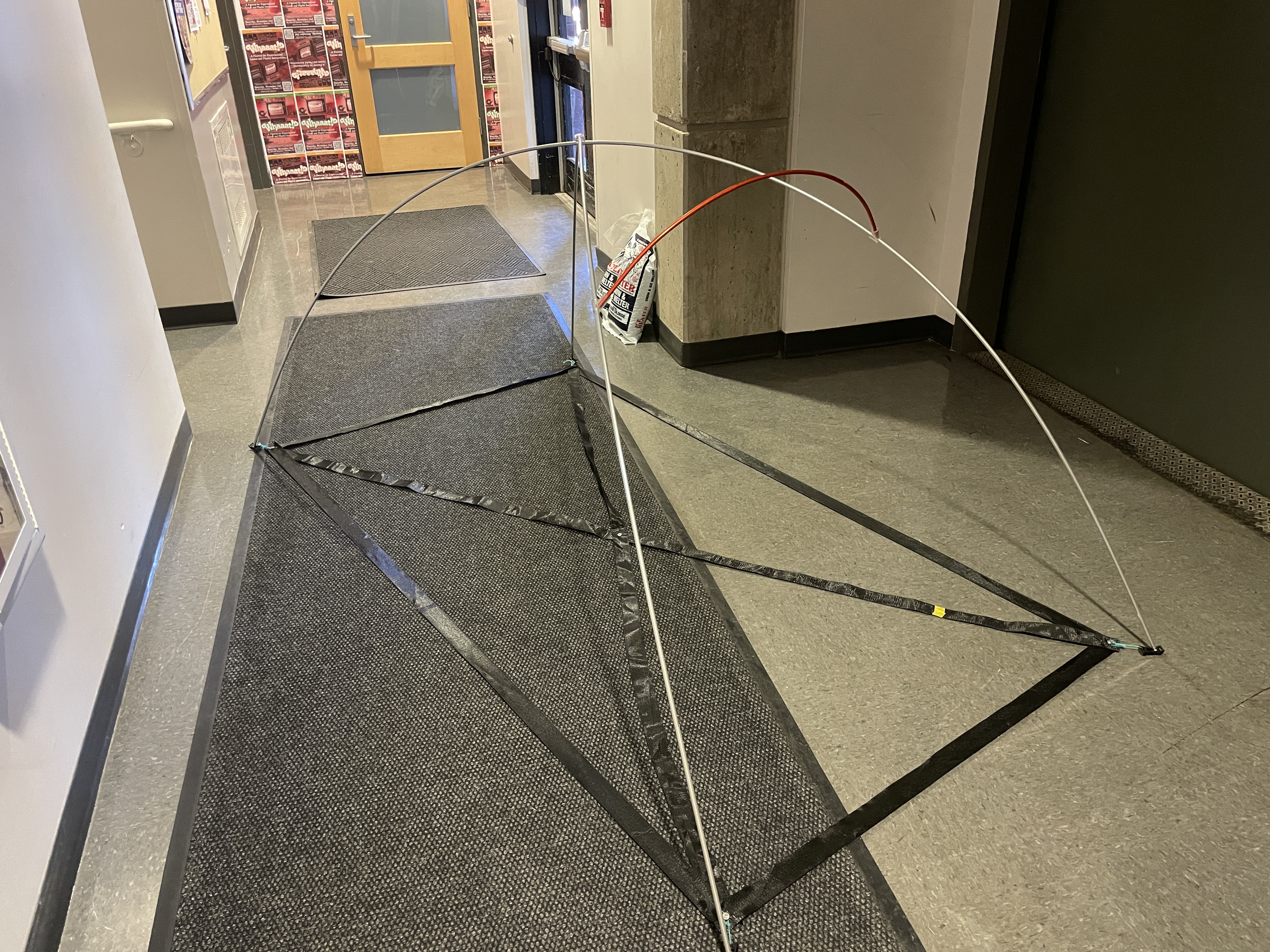
Poles
Our pole system was carefully designed to provide structural integrity while maintaining ease of assembly. We tested various pole configurations to achieve the perfect balance of strength and functionality.

Sewing
The sewing process focused on creating strong, durable seams. We considered multiple thread types and fabric types, ultimately deciding on polyester based on its water resistance and durability.
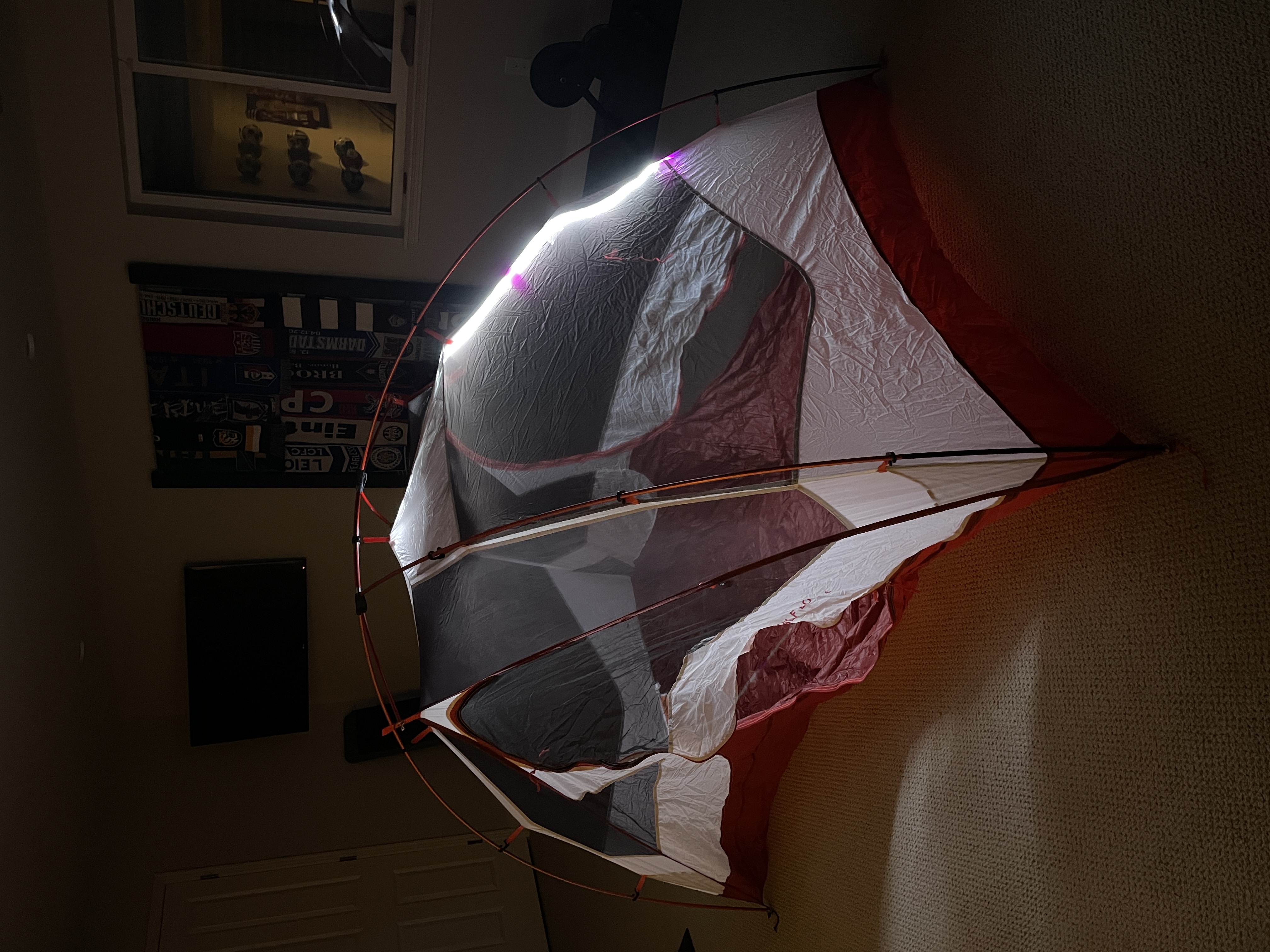
Lighting
We experimented with various lighting types, including LED and COB LED strips, EL Wire and fairy lights. Ultimately, we decided to use fairy lights due to their low power consumption, flexibility, and functional ambient glow.
Challenges Faced
Several key challenges emerged during this iteration:
- Patterning technique not viable for future iterations.
- Sewing was more difficult than expected due to using a non-standard fabric given to us.
- Pinning in fabric on finished iteration was more difficult and less insightful than expected.
- Determining best possible path for lighting integration for one continuous light strip.
- Maintaining symmetry was difficult due to only using hand tools.
- Unsure on whether brow pole pattern should have concave or convex shape.
- Finished iteration was air tight with no windows or doors, making it difficult to see inside.
Key Learnings
This iteration provided valuable insights that shaped our future development:
- Tent is not wide enough to fit two people comfortably.
- Draping method will not work for a tent, but rather a rainfly.
- Trim final pole in sequence to move vertical position and angle of brow pole.
- Sewing order of operations established.
- Fairy lights are plenty bright enough and can handle adverse weather conditions (cold).
